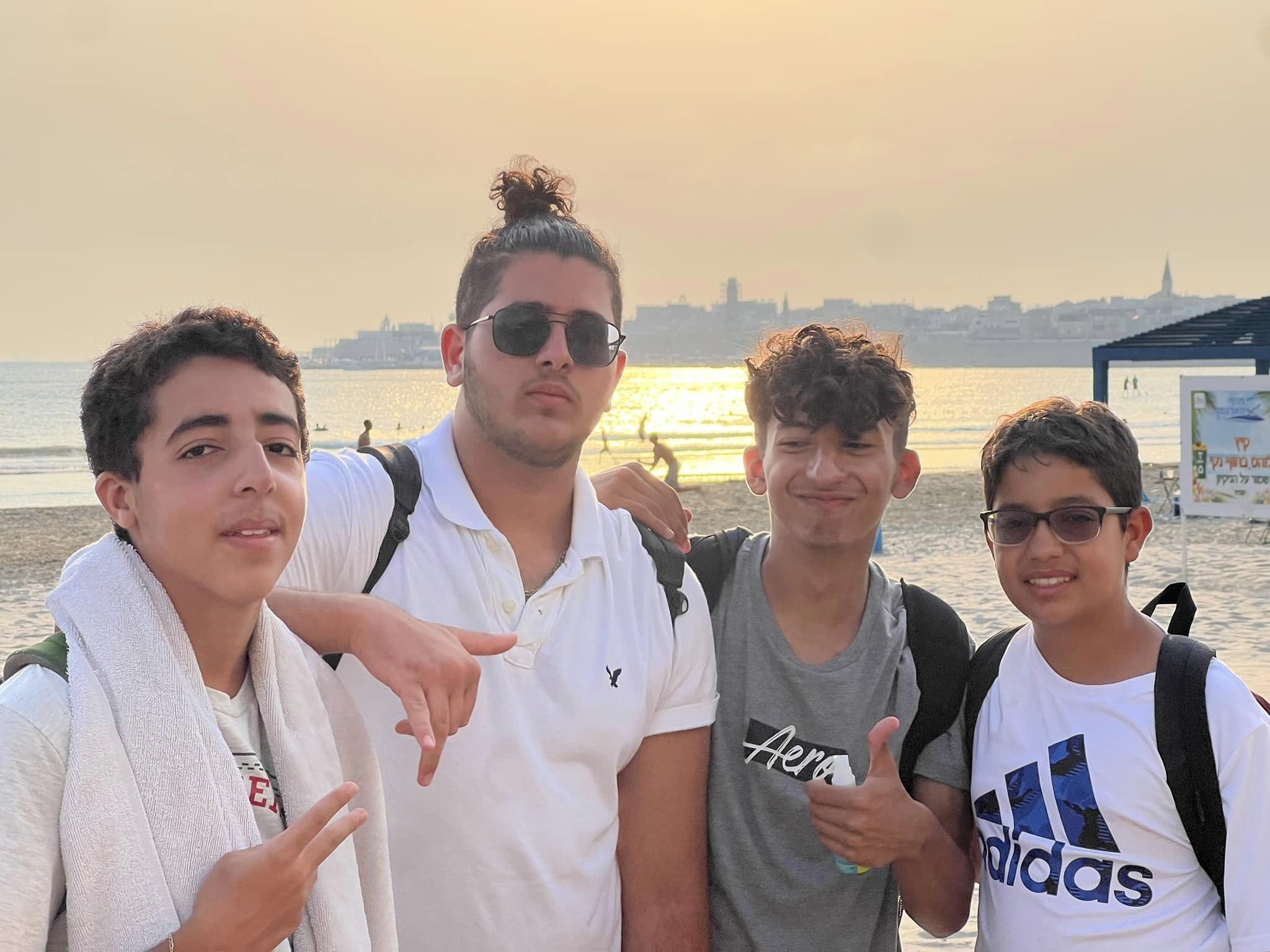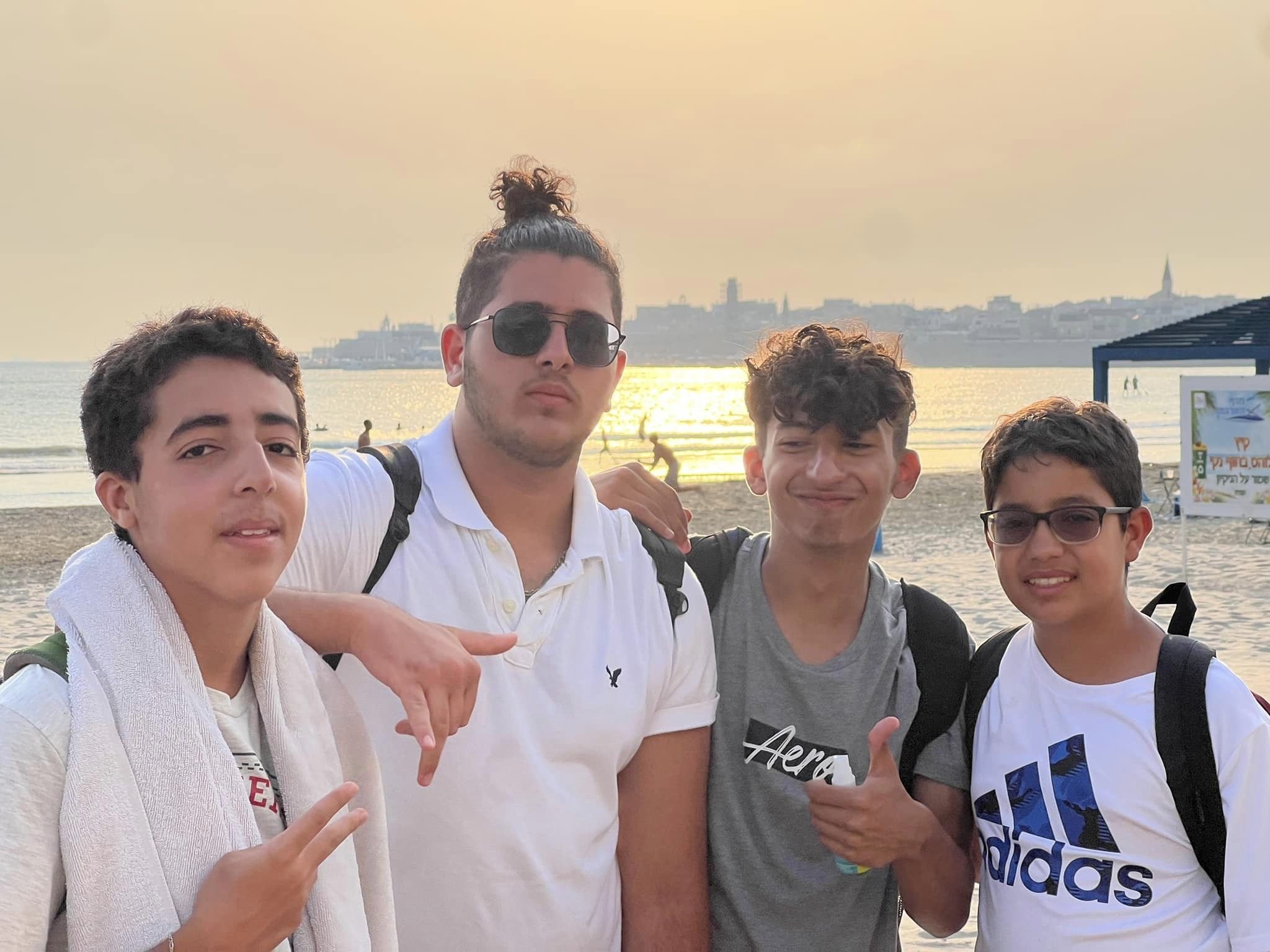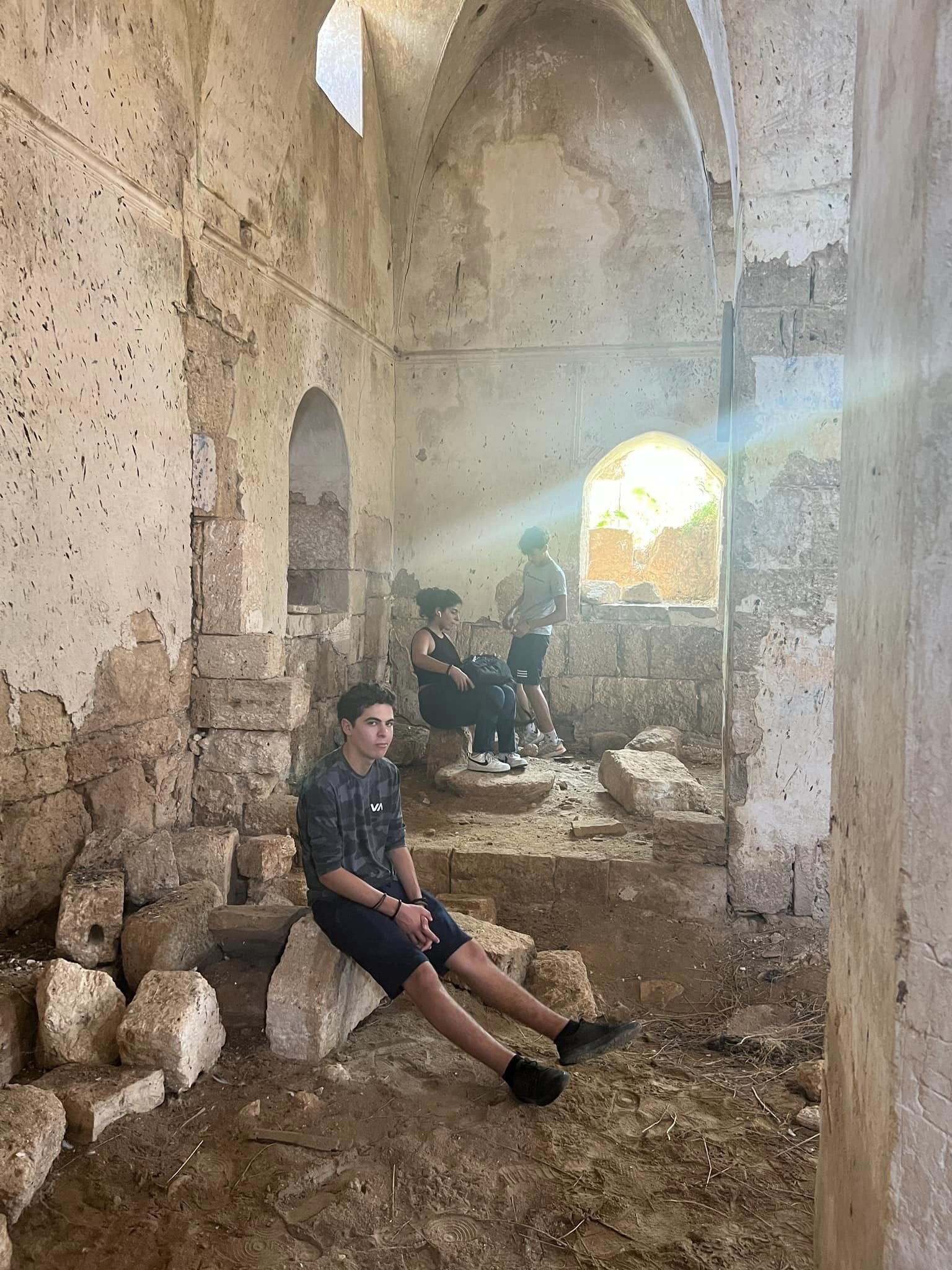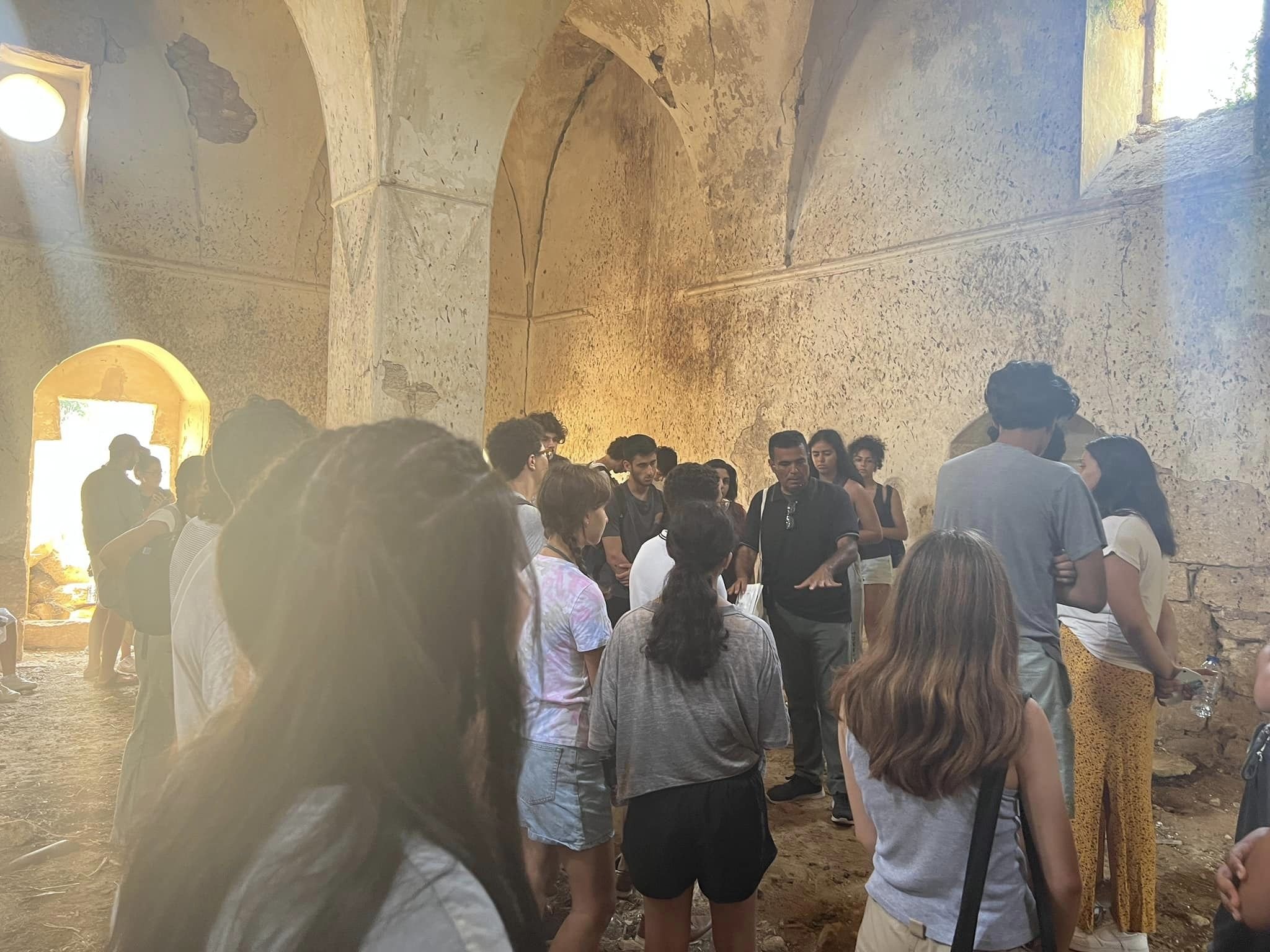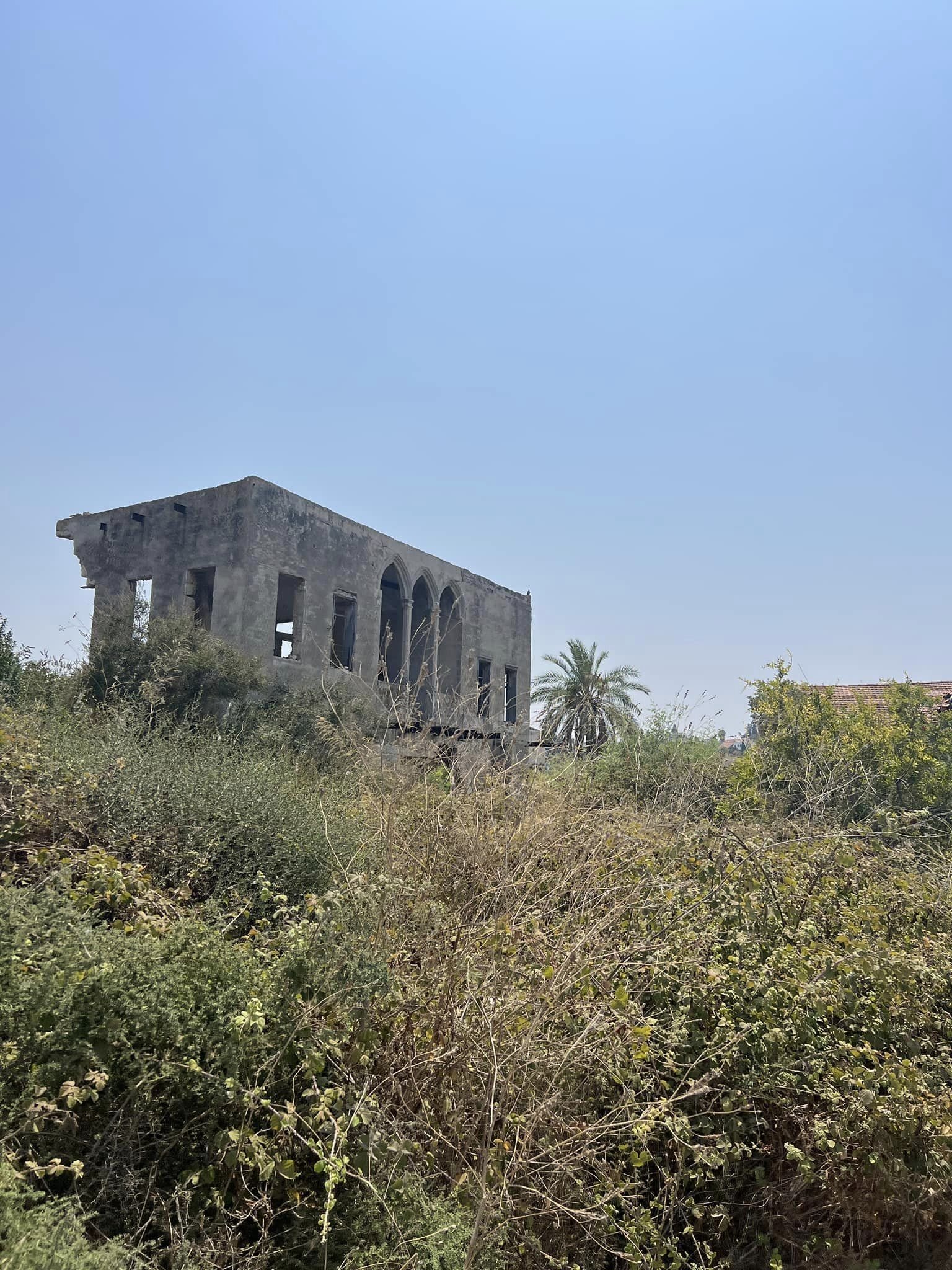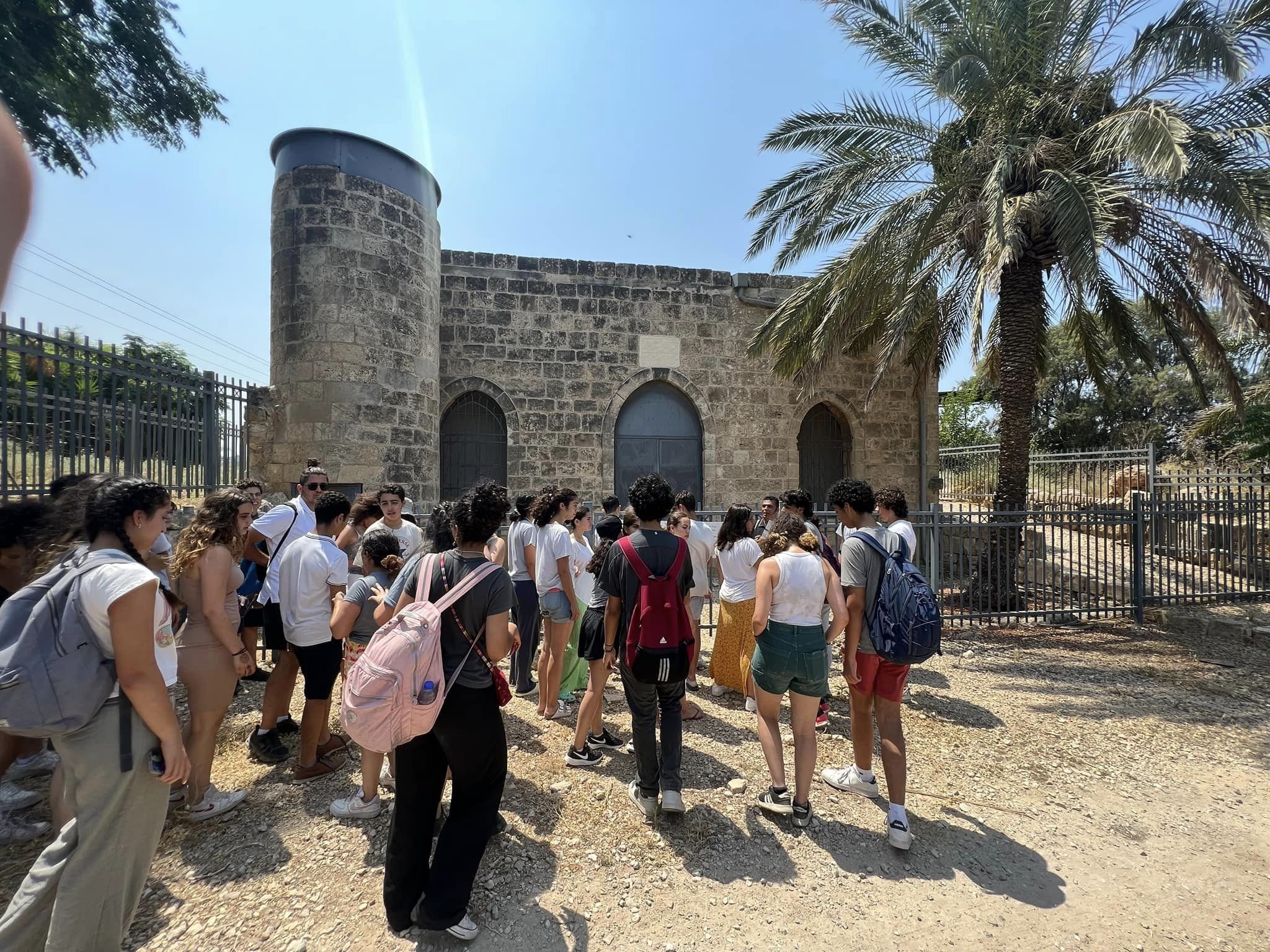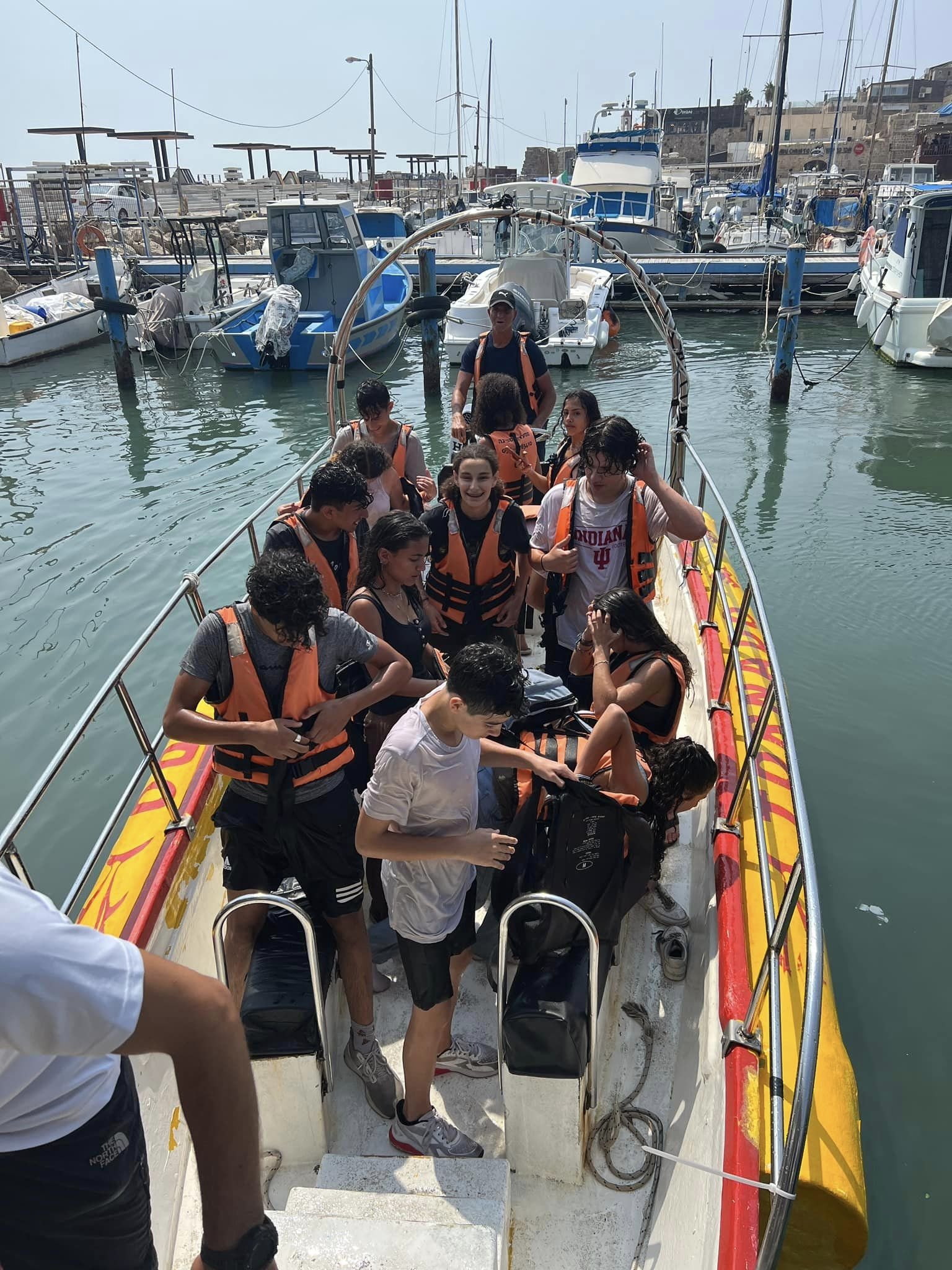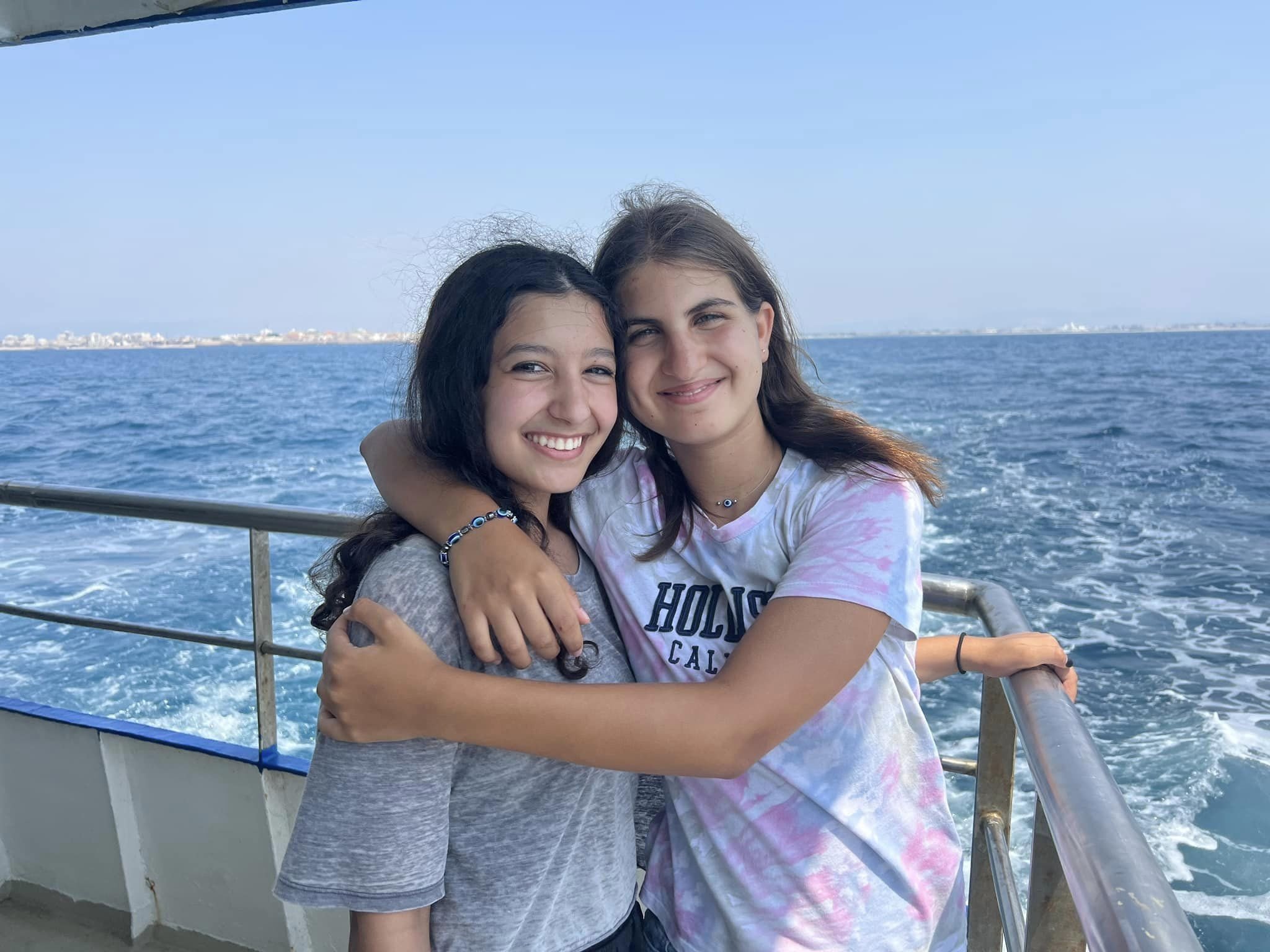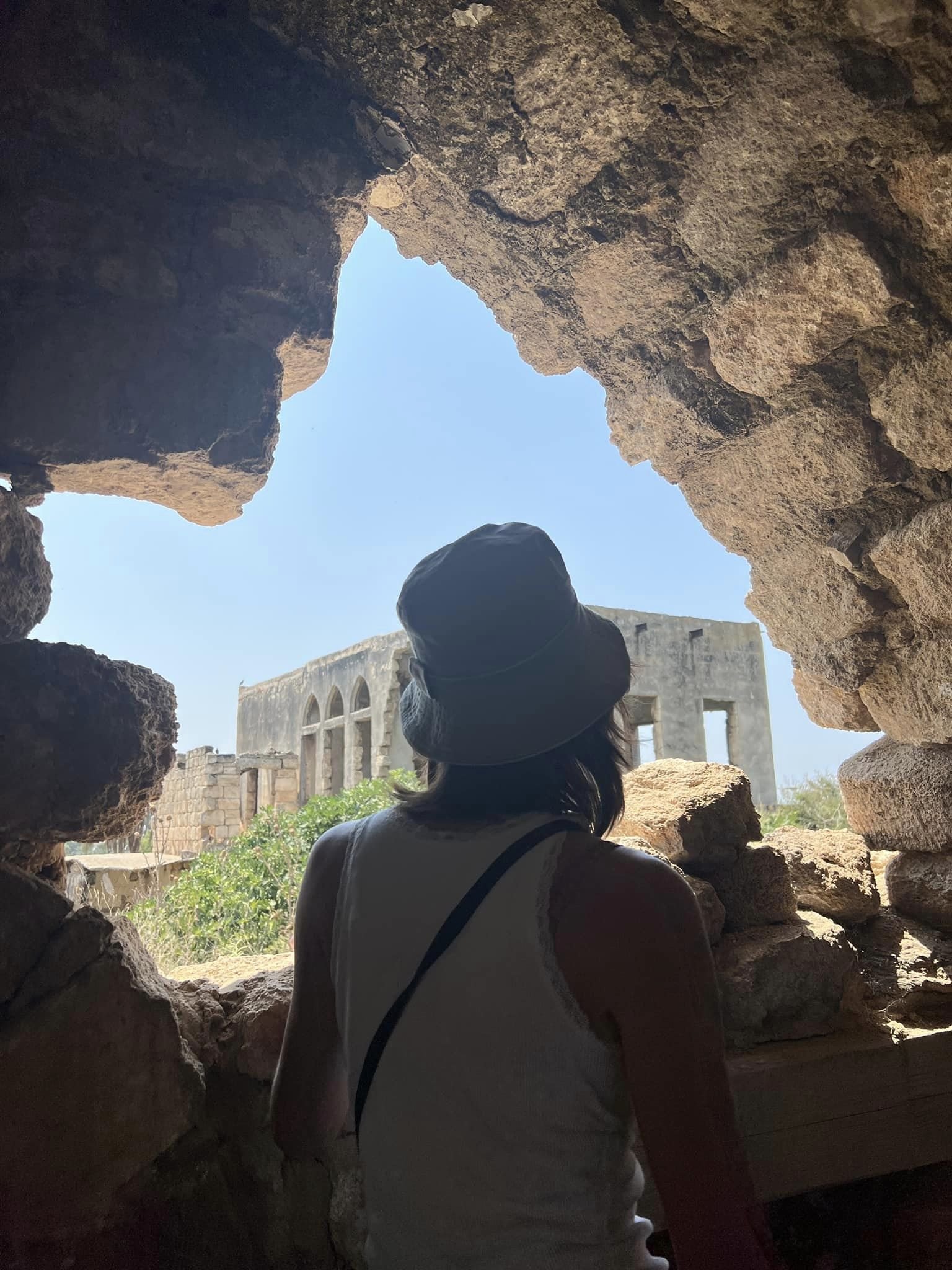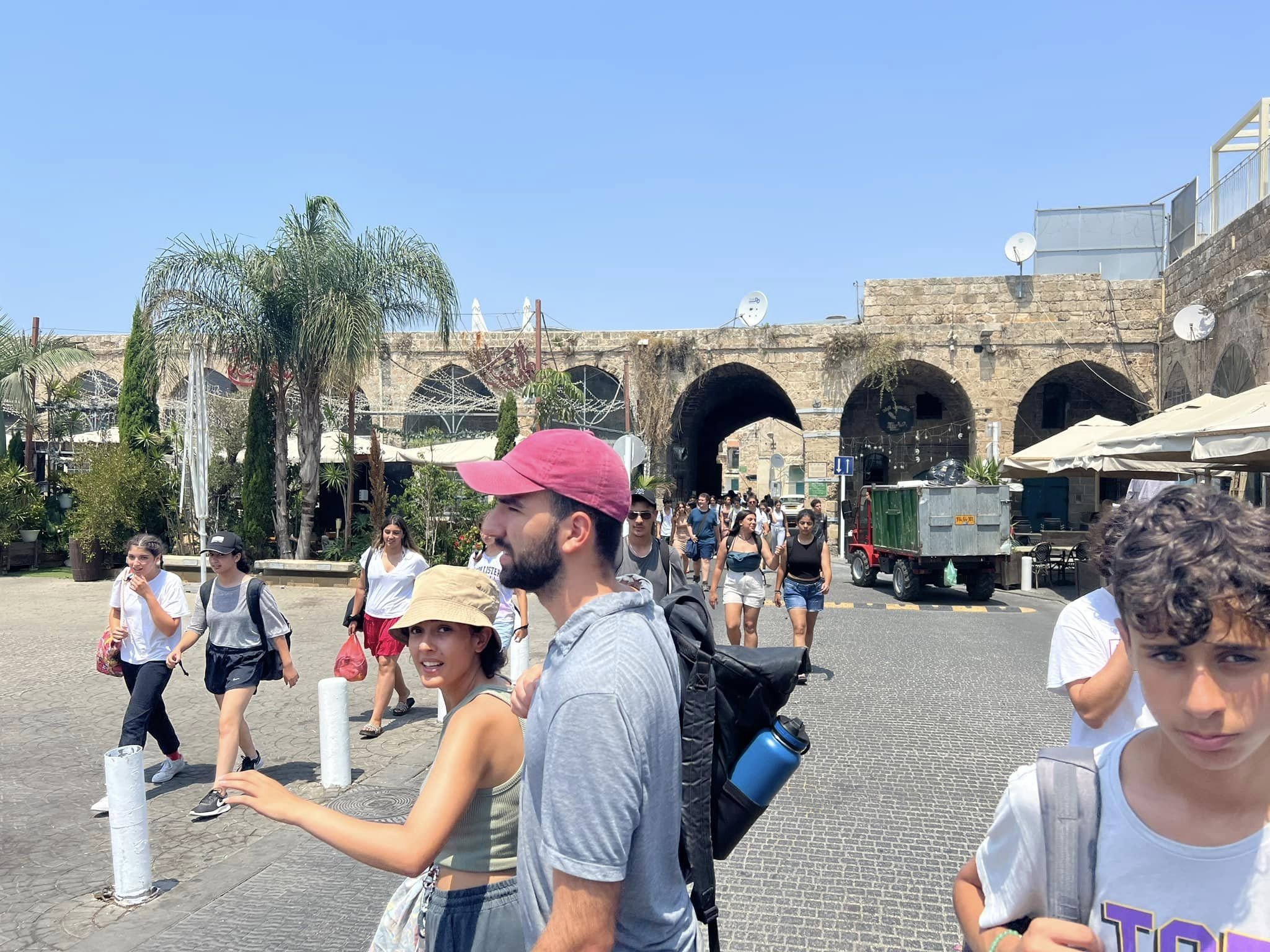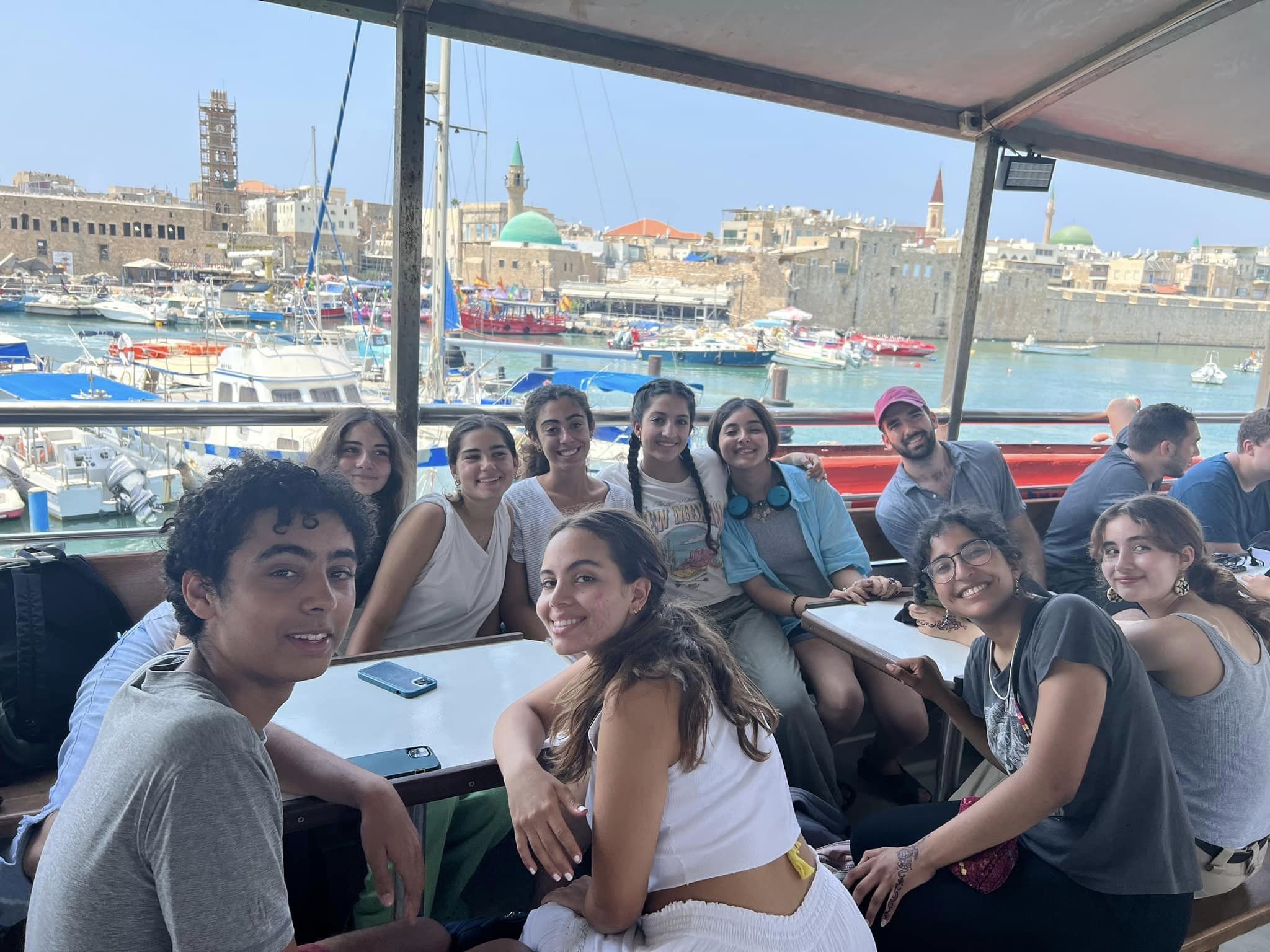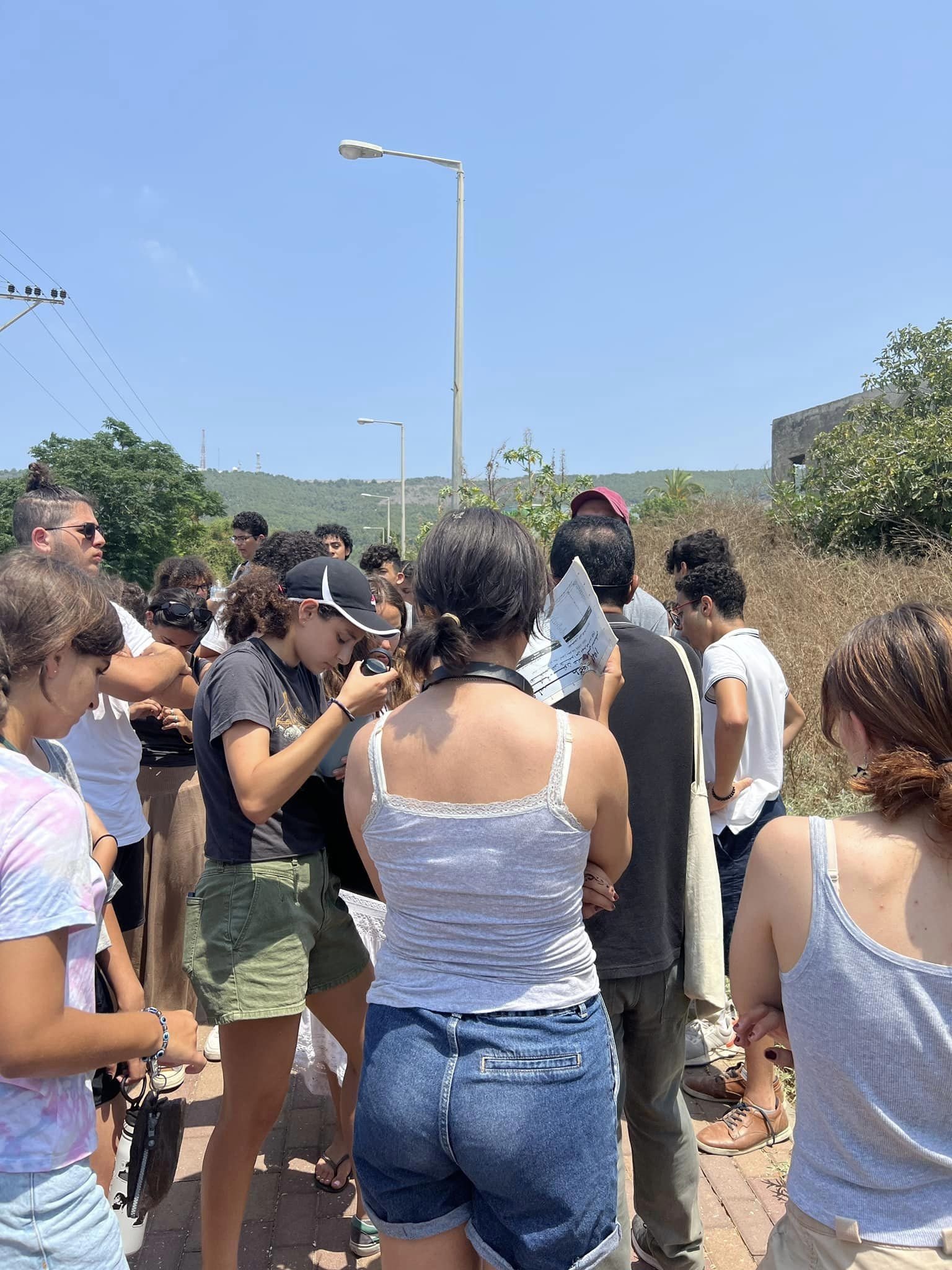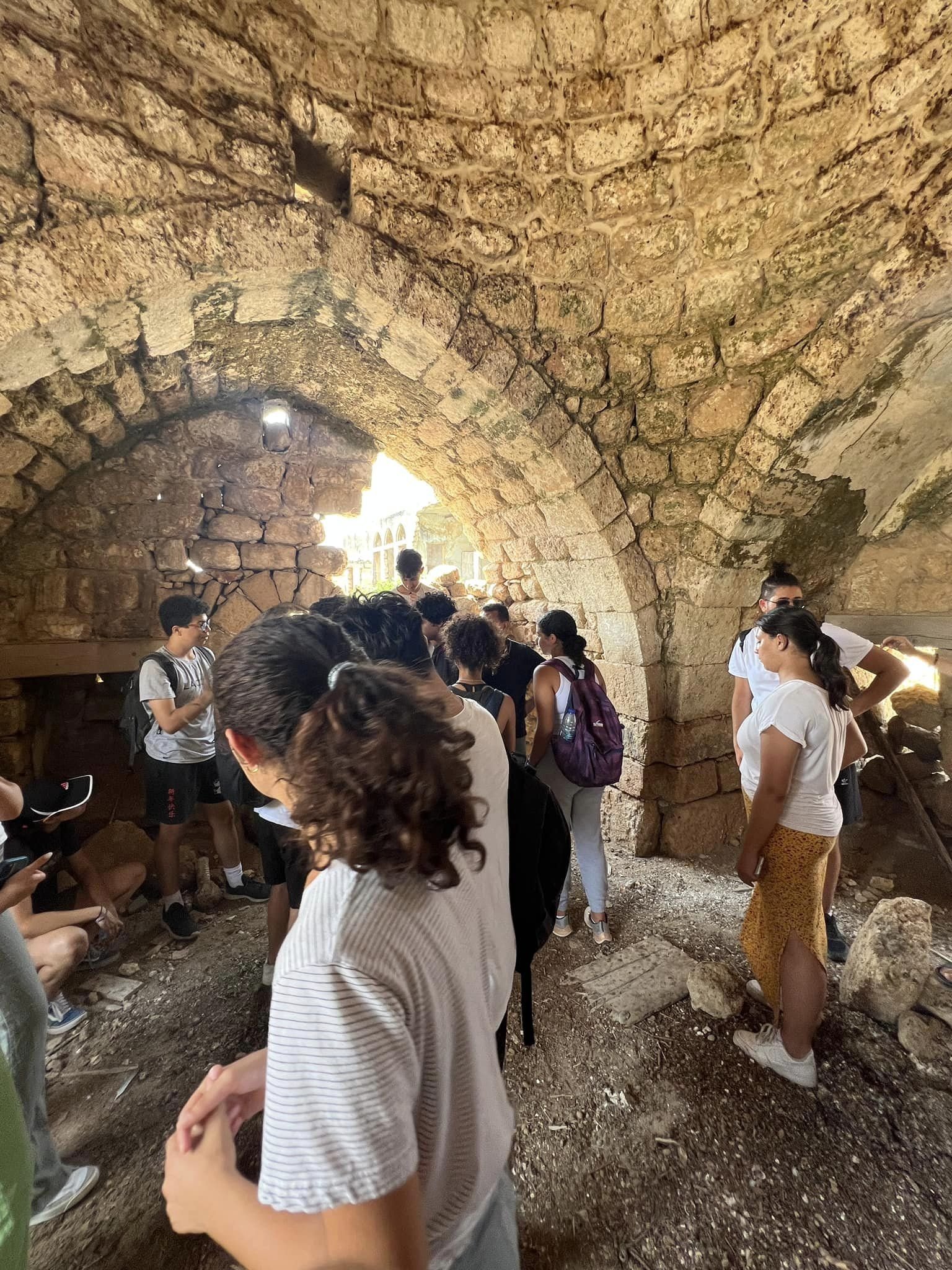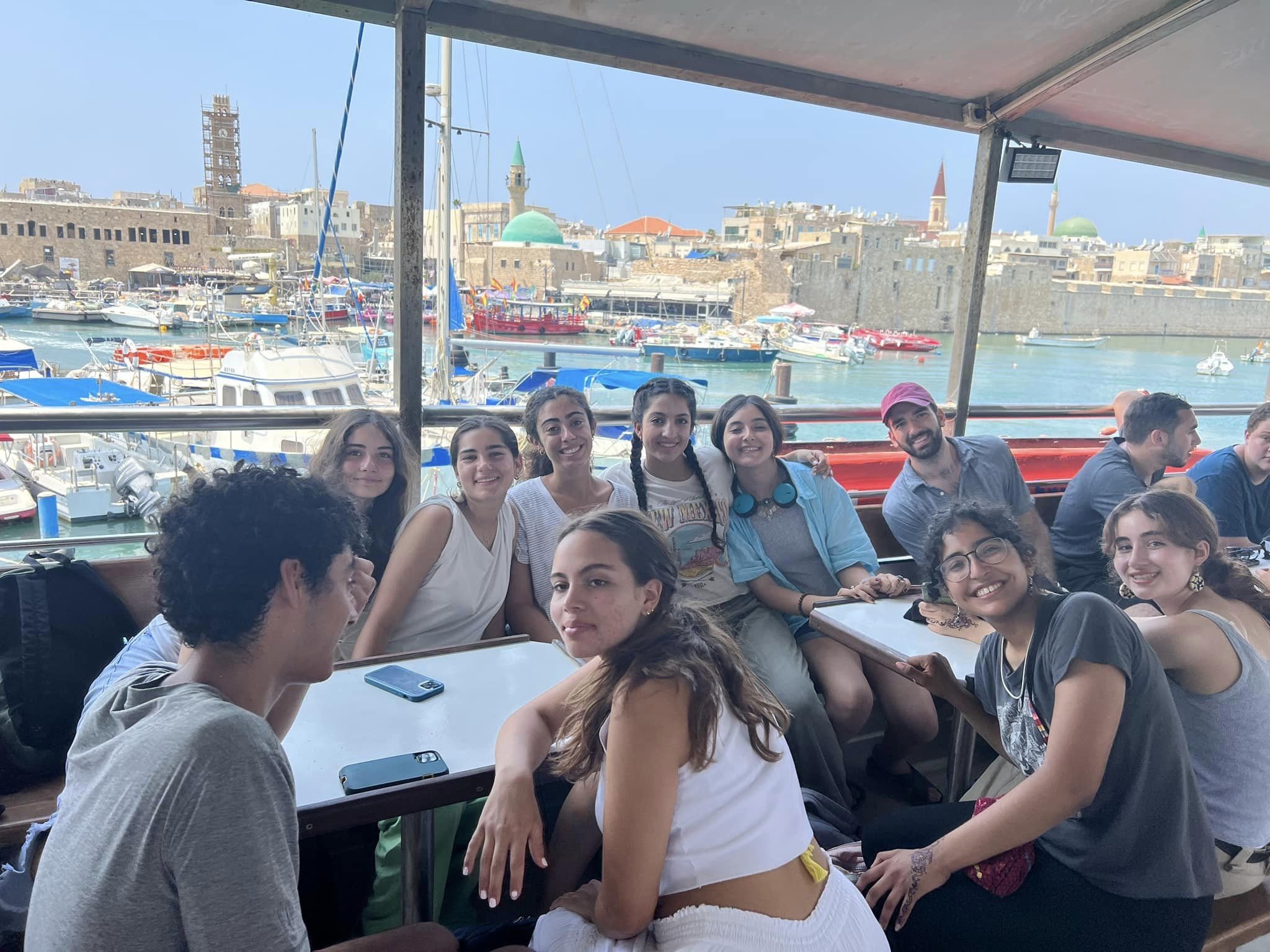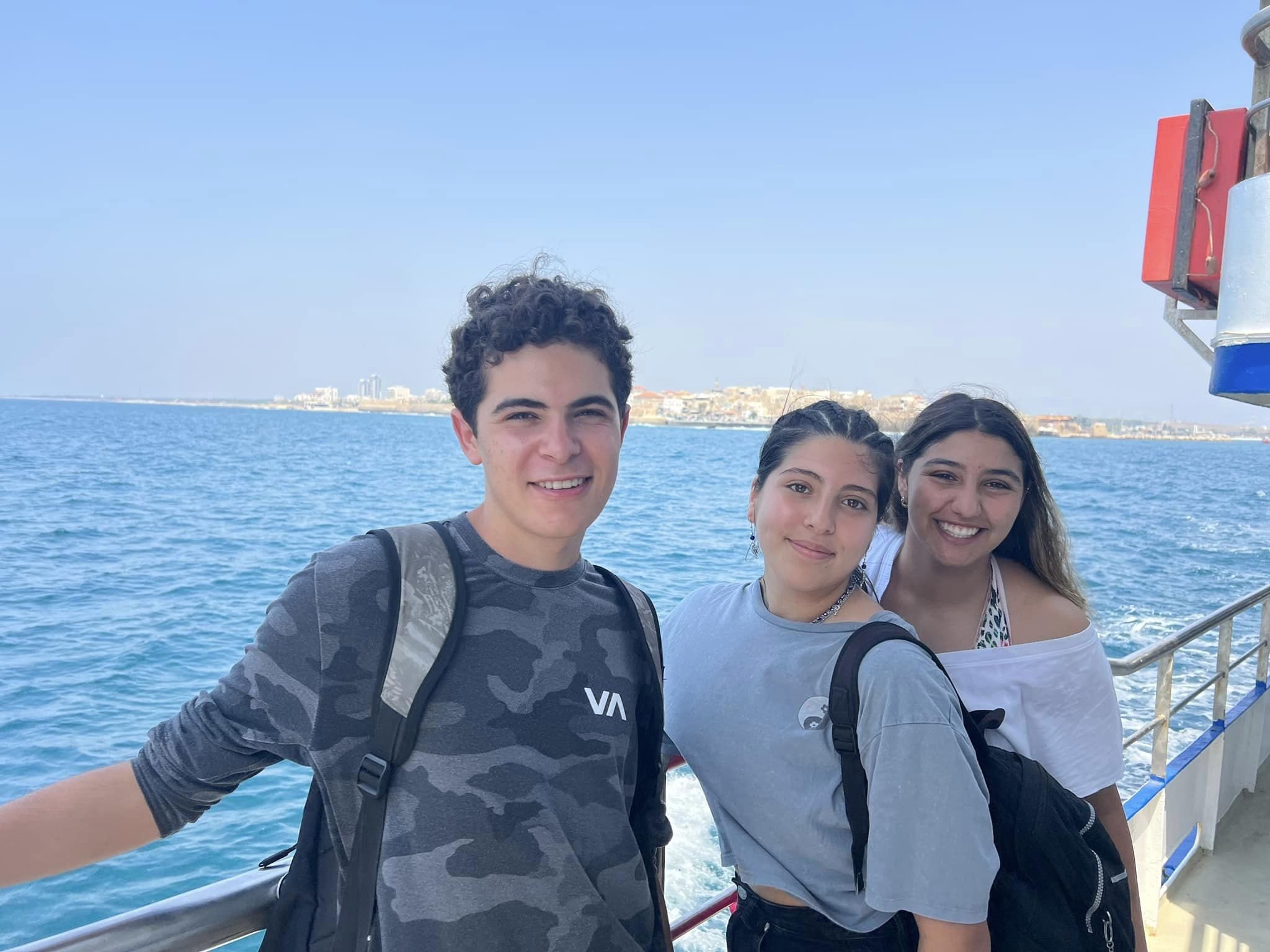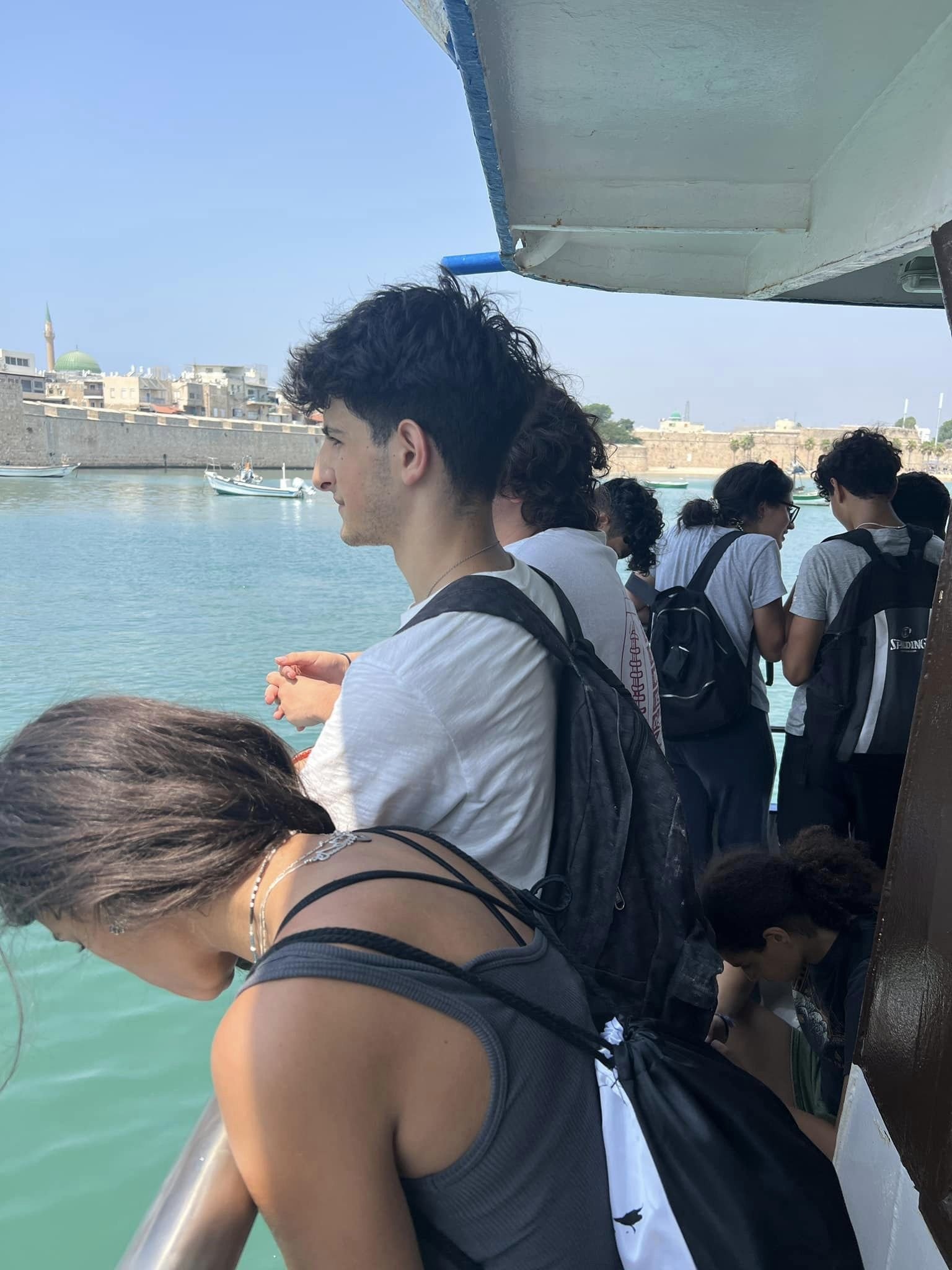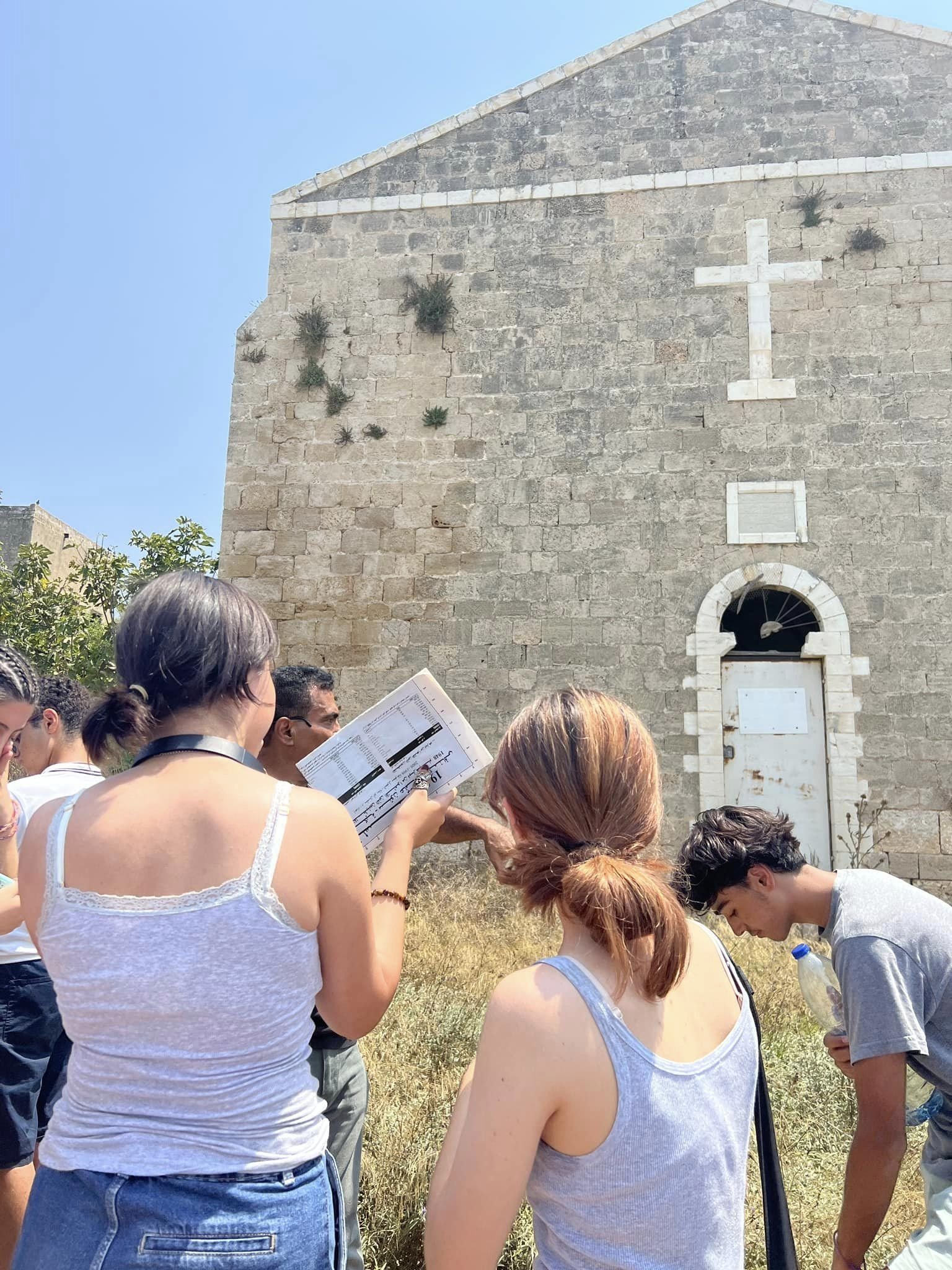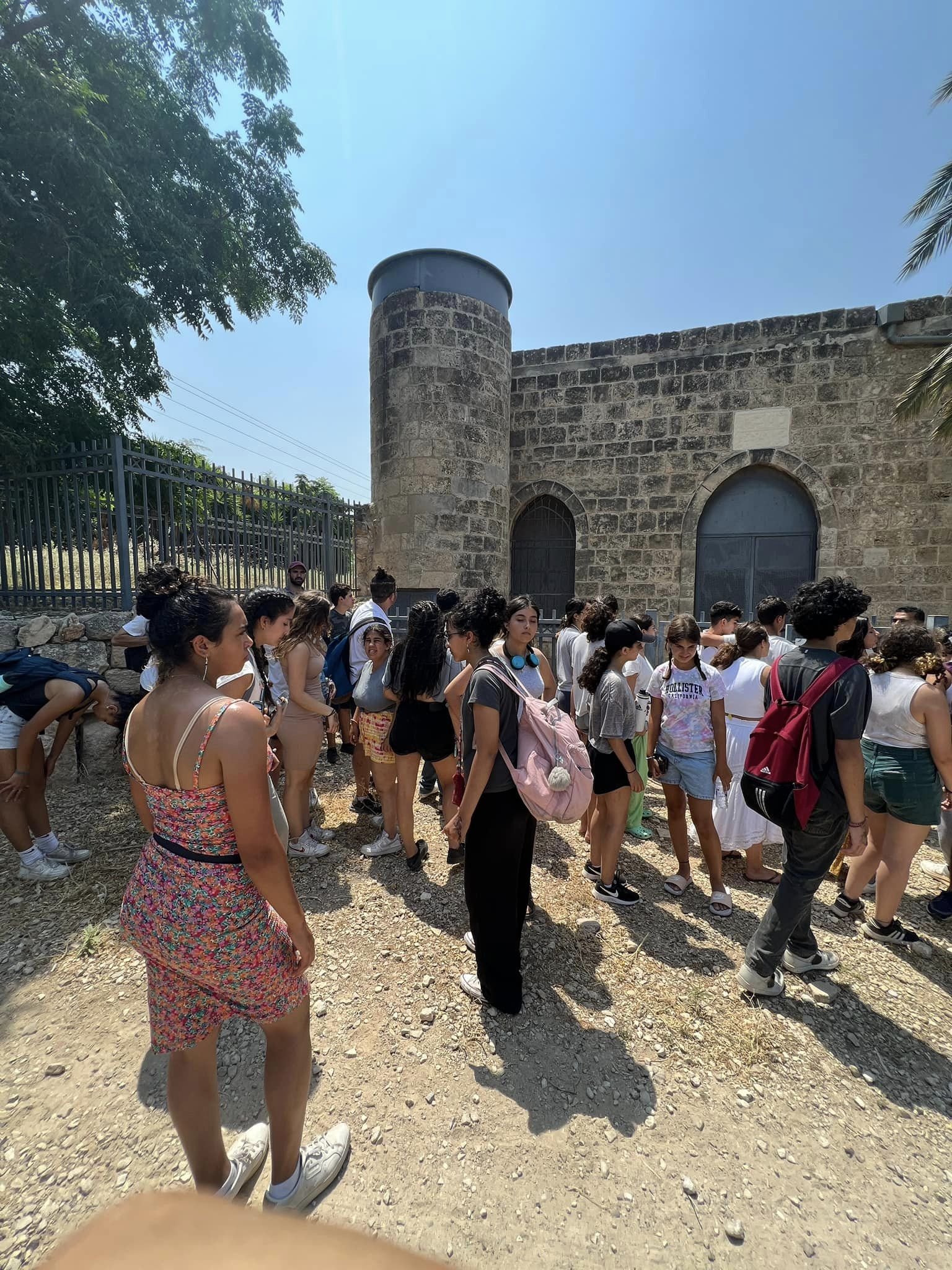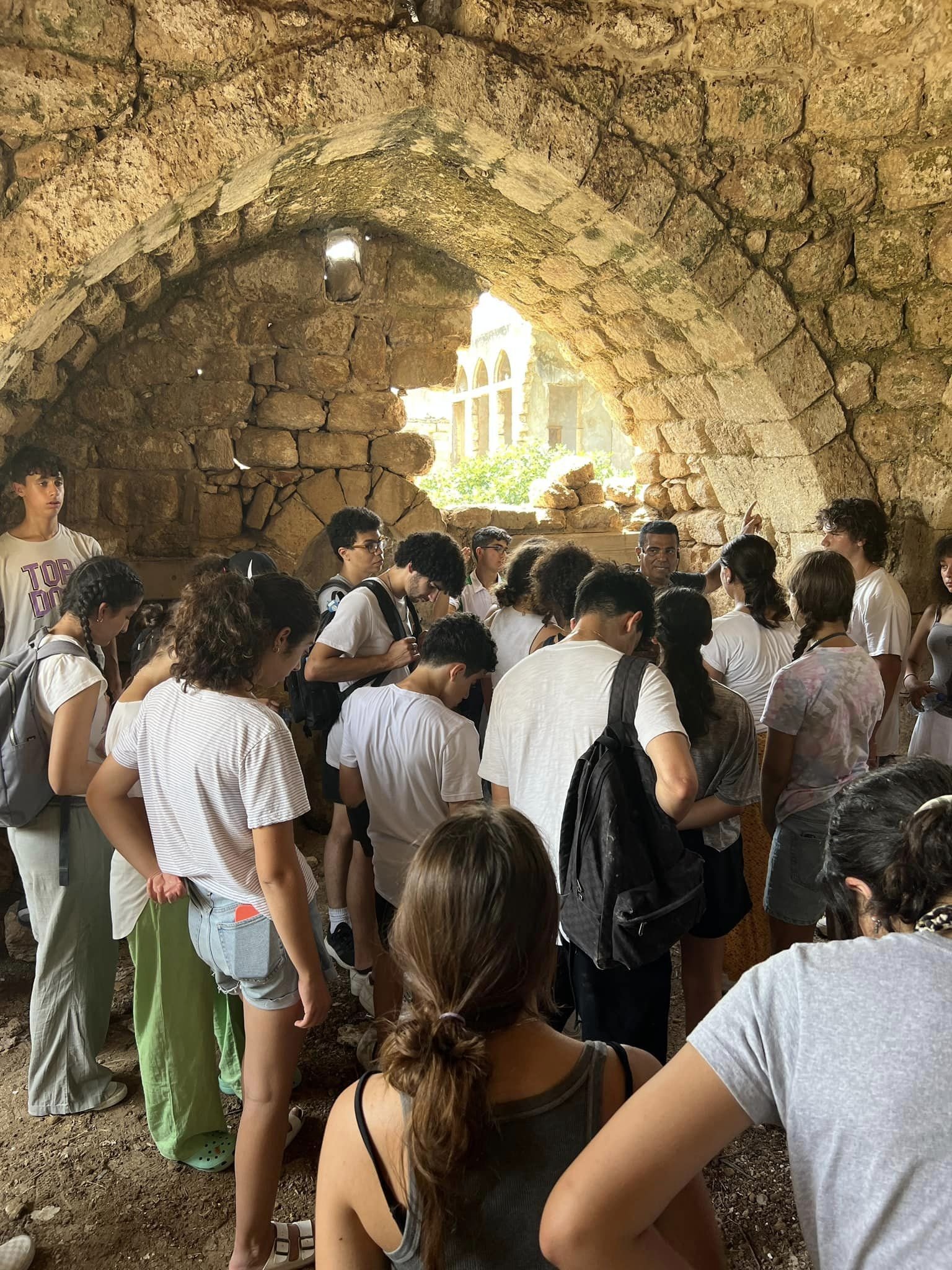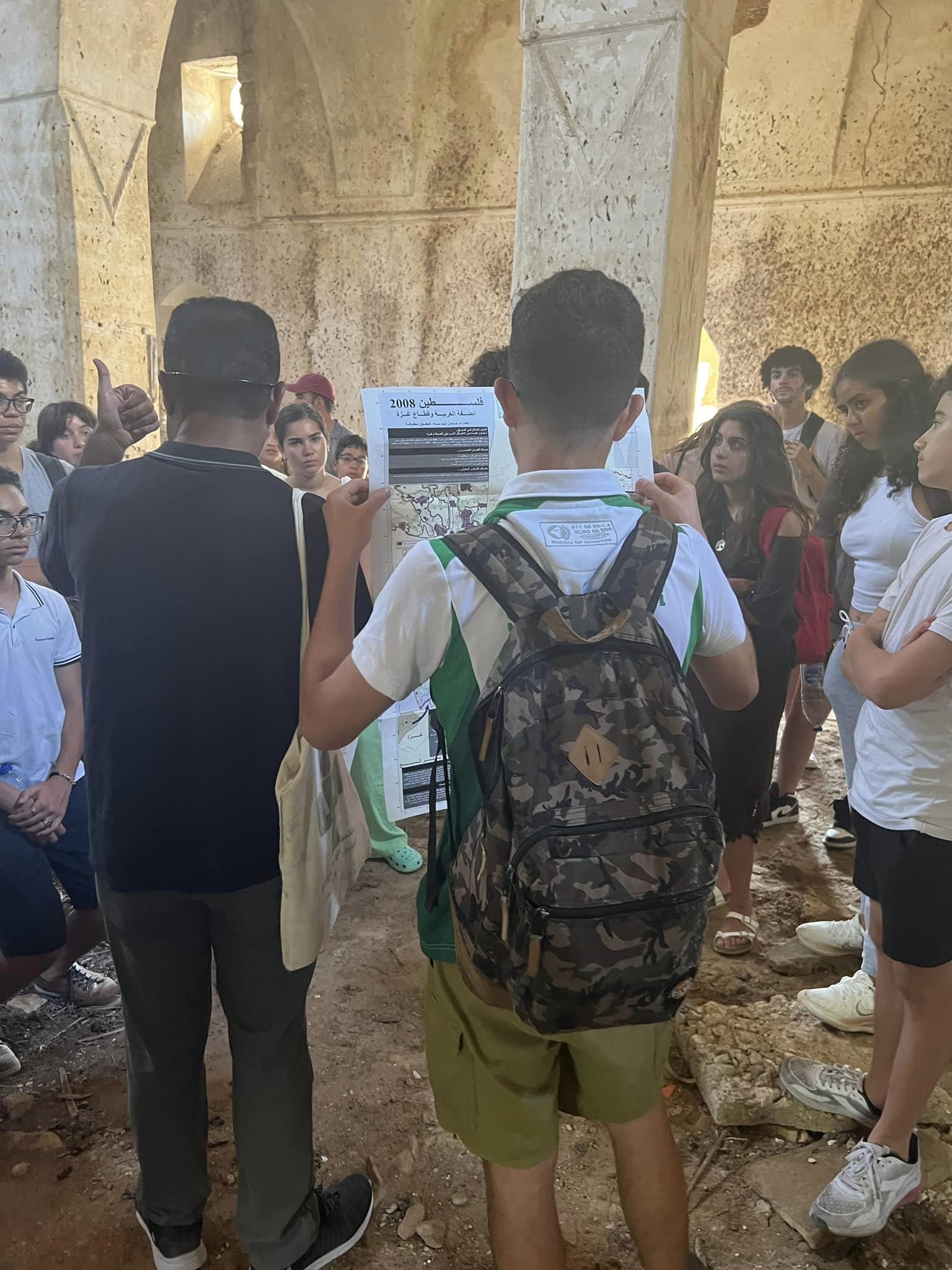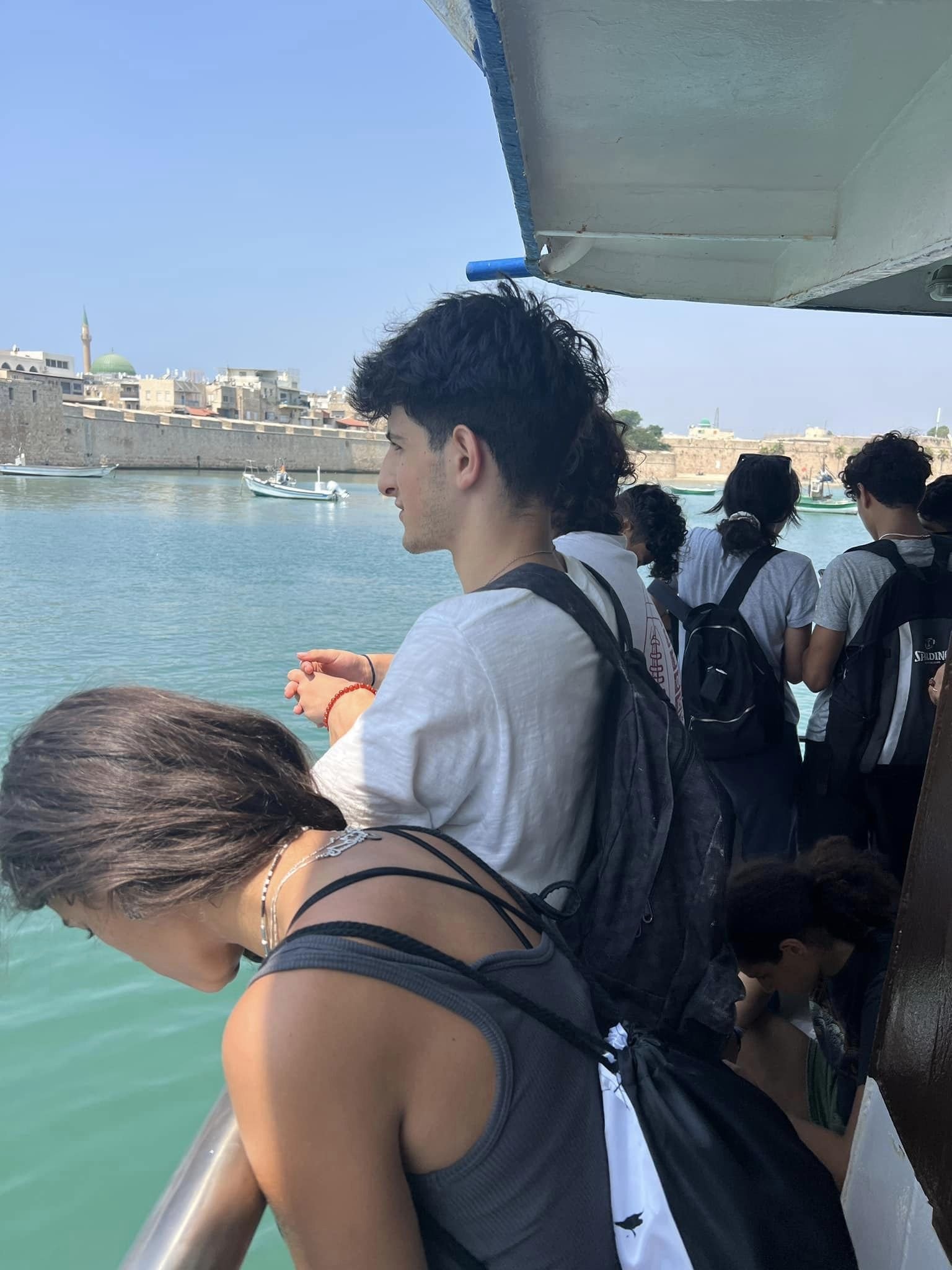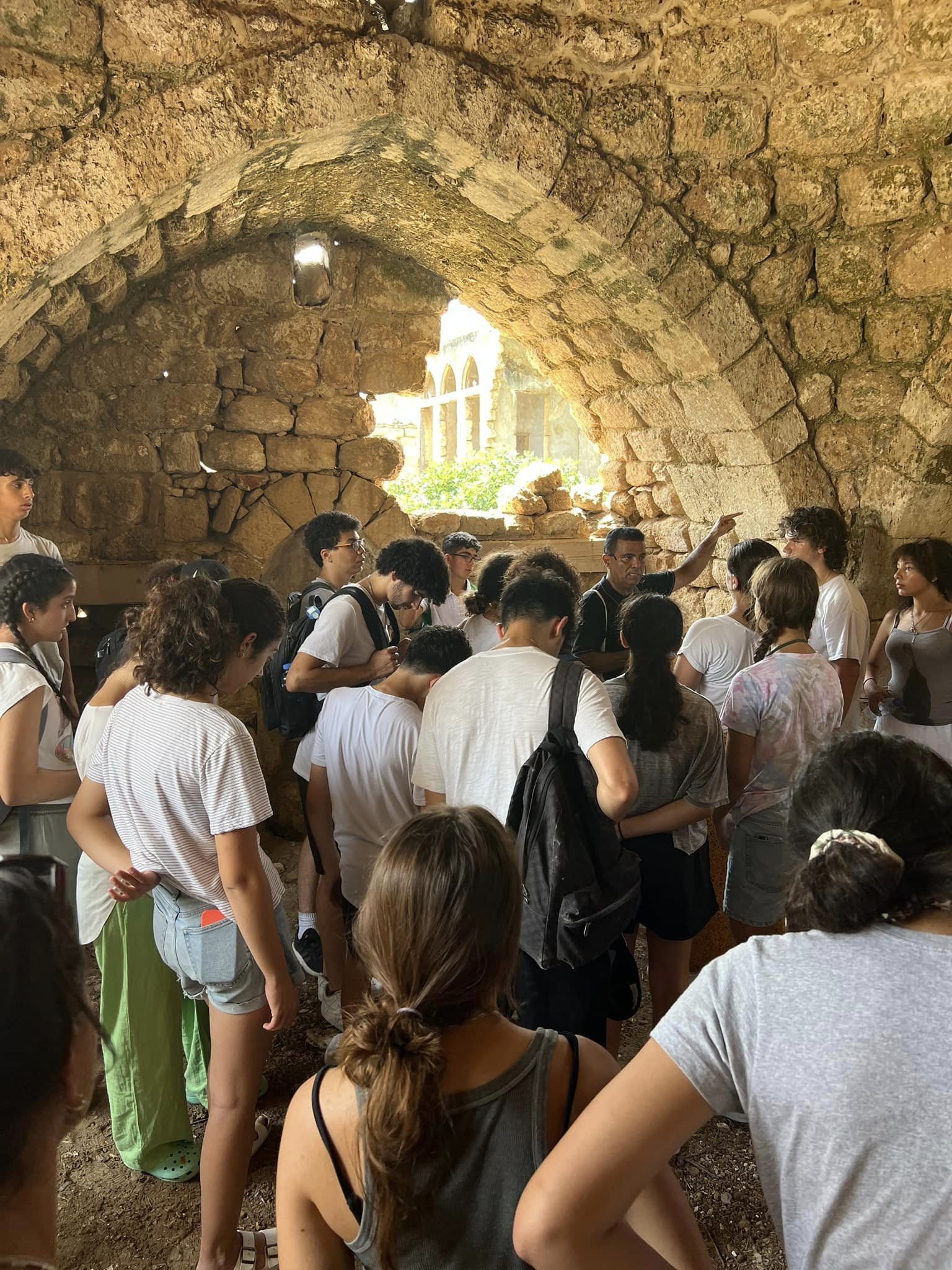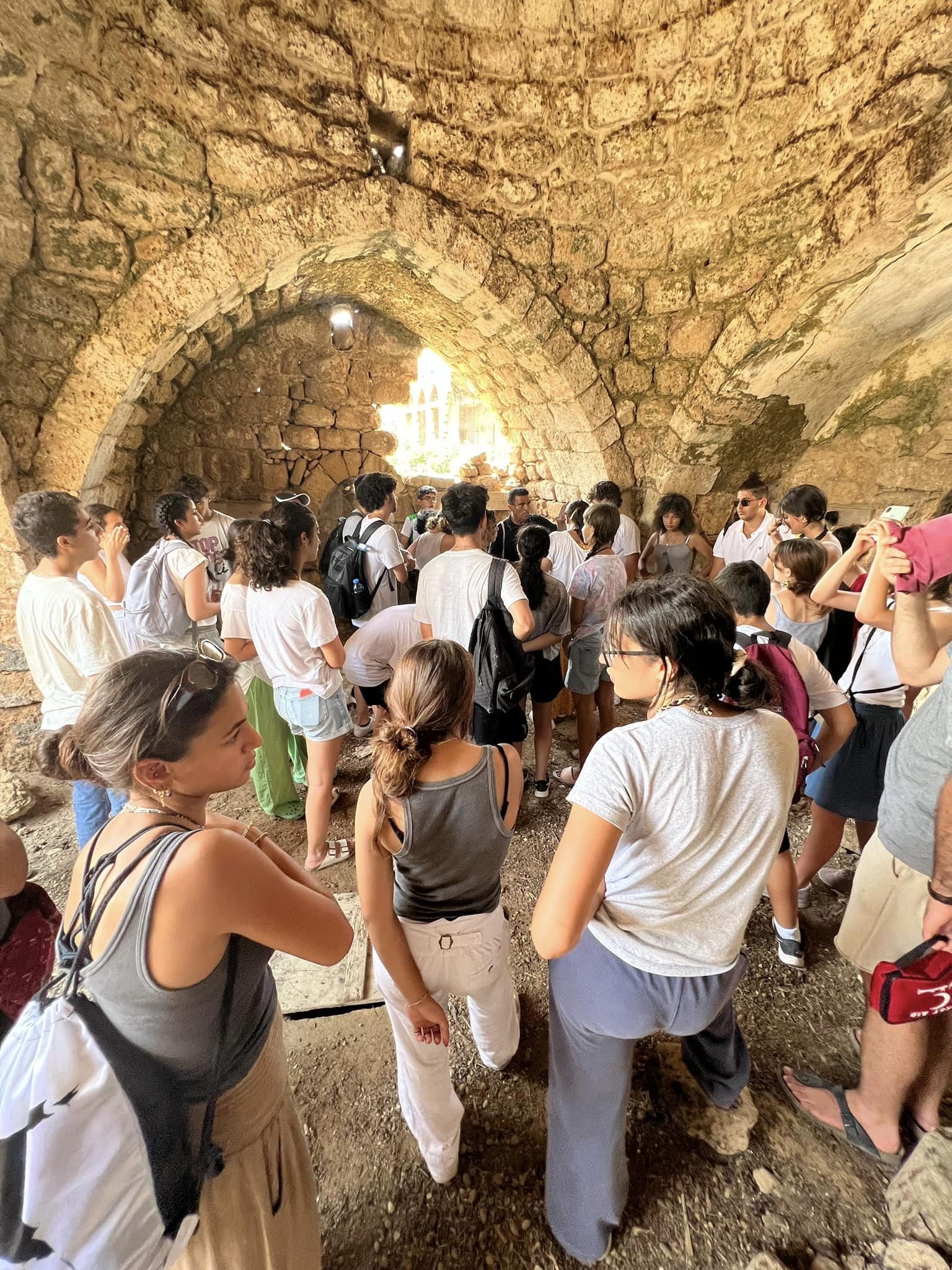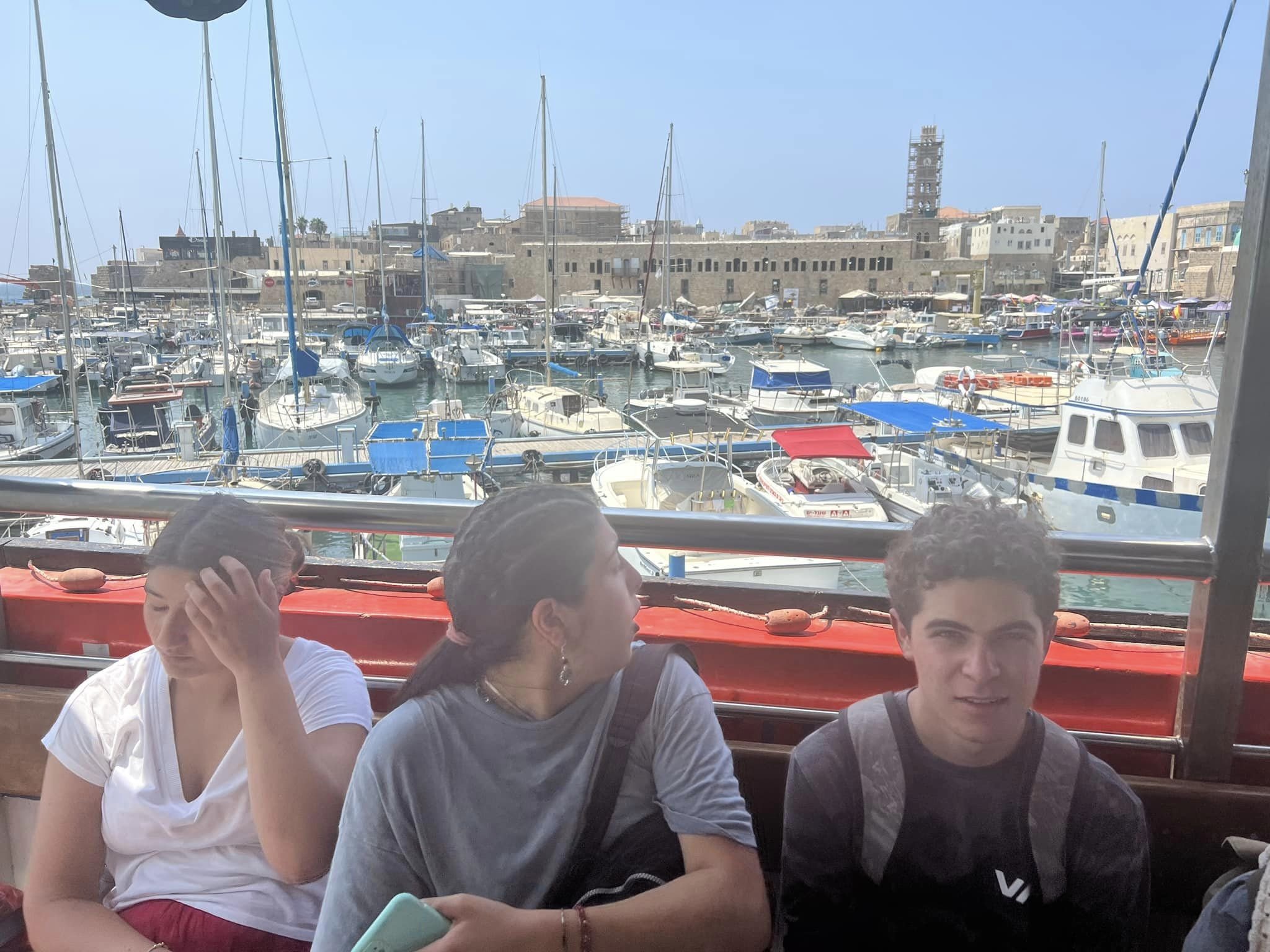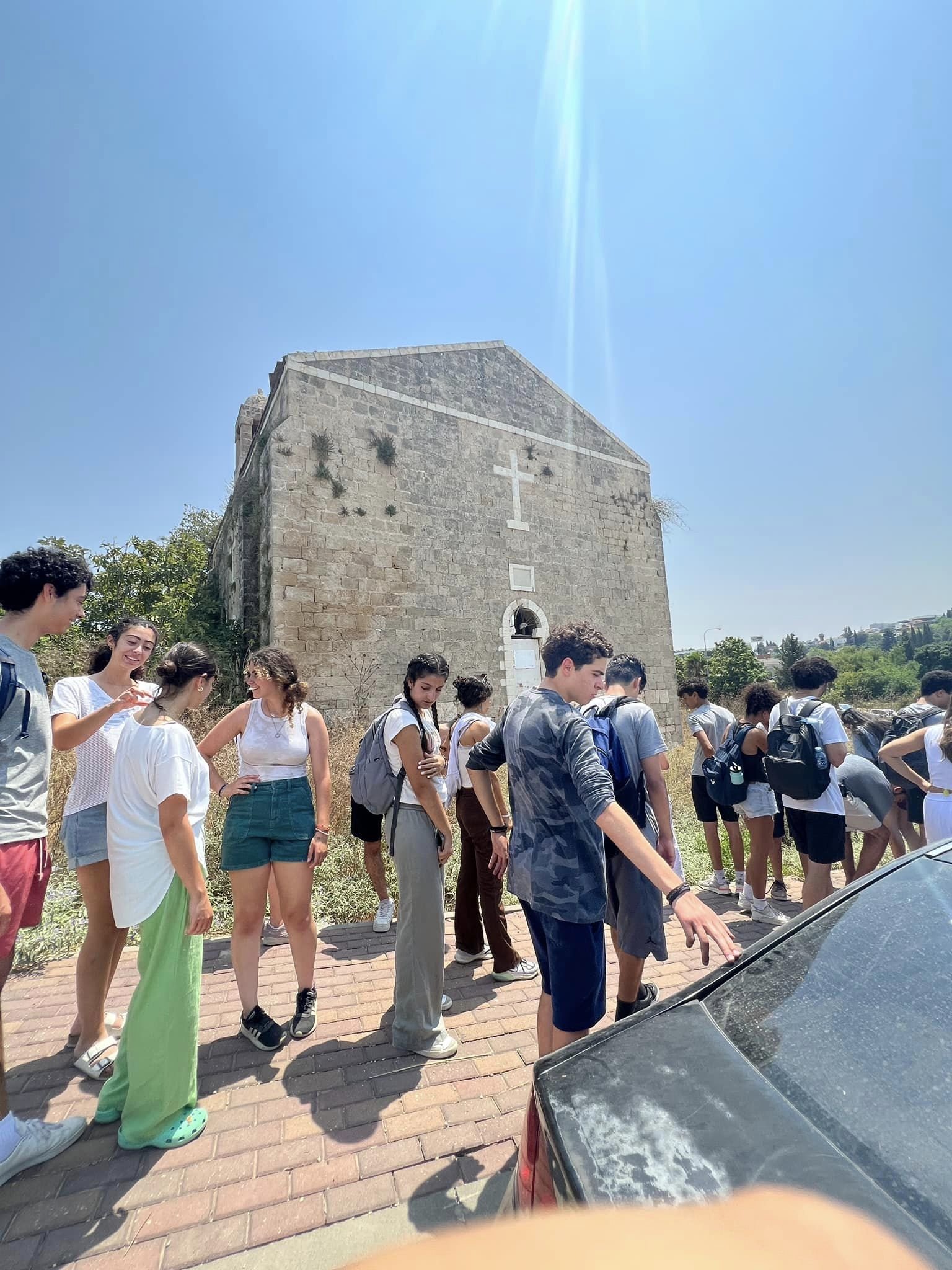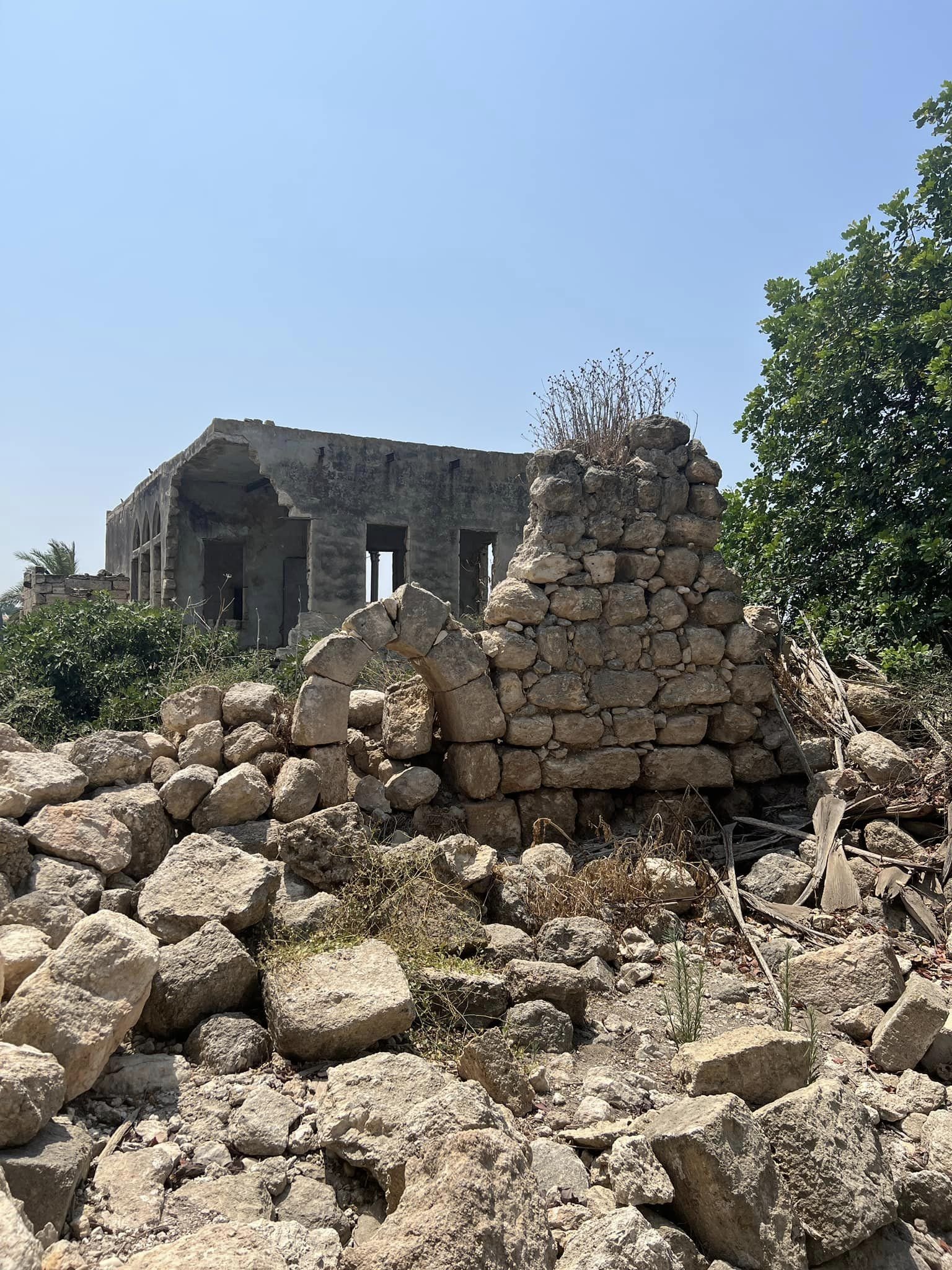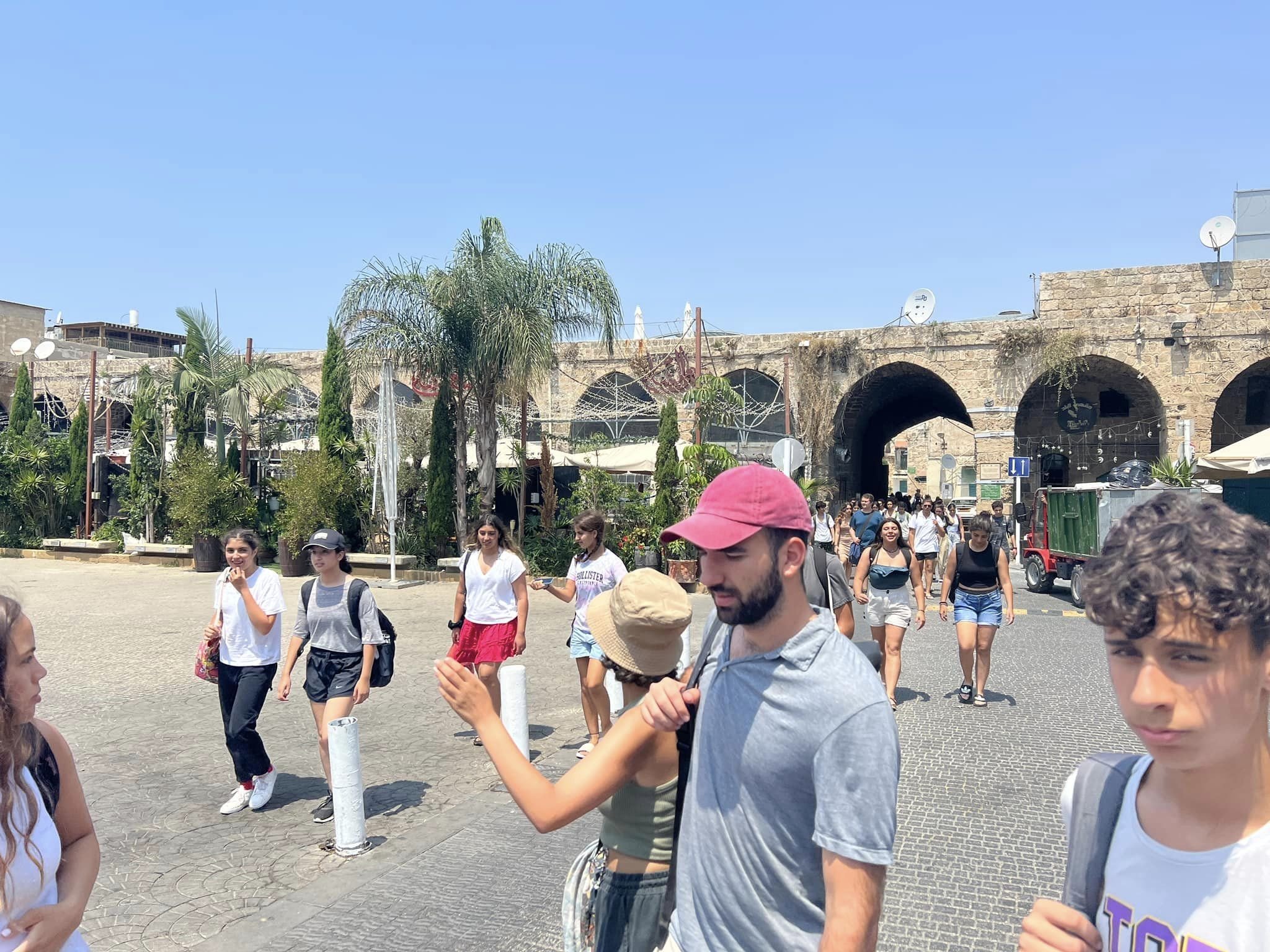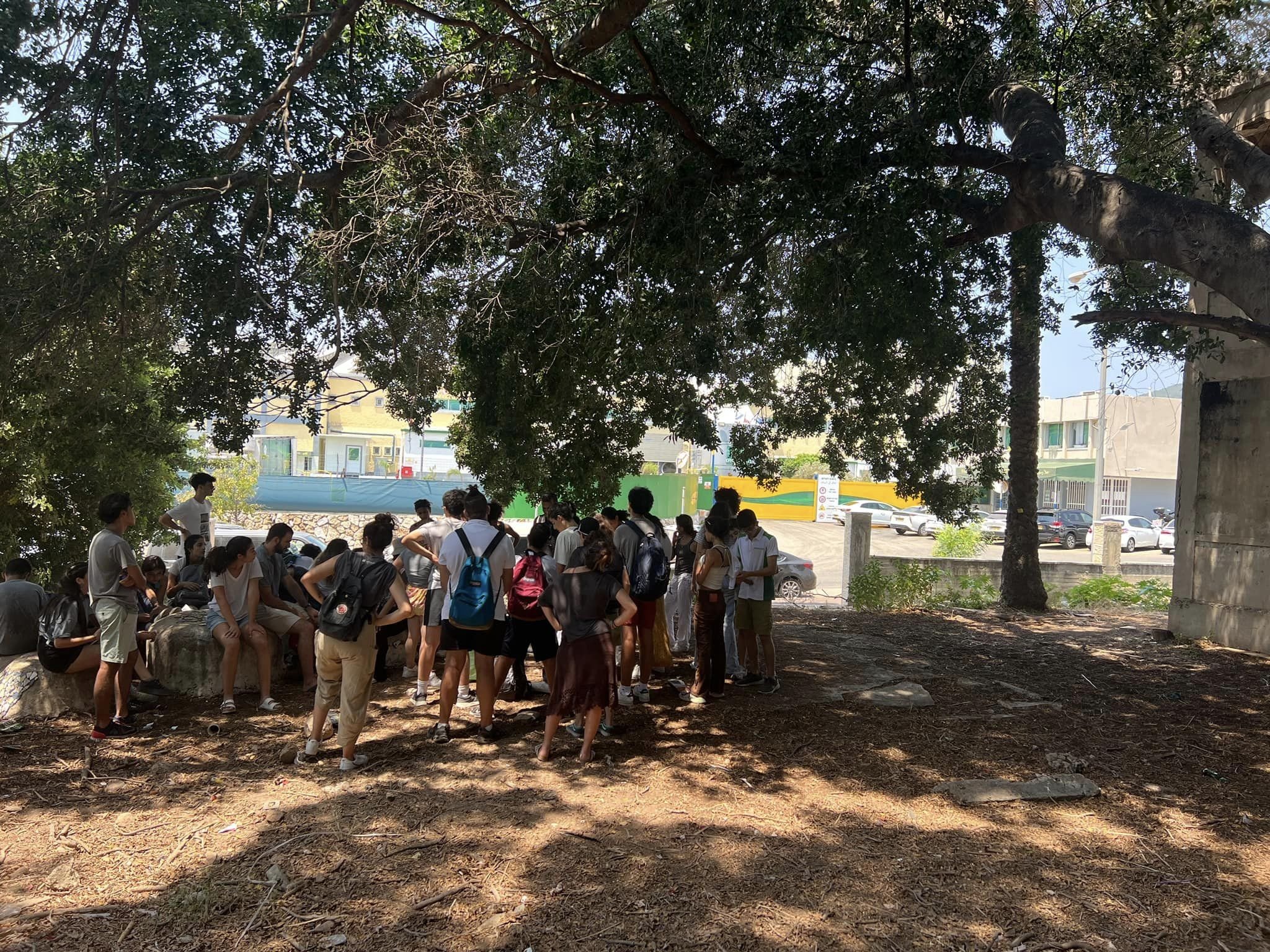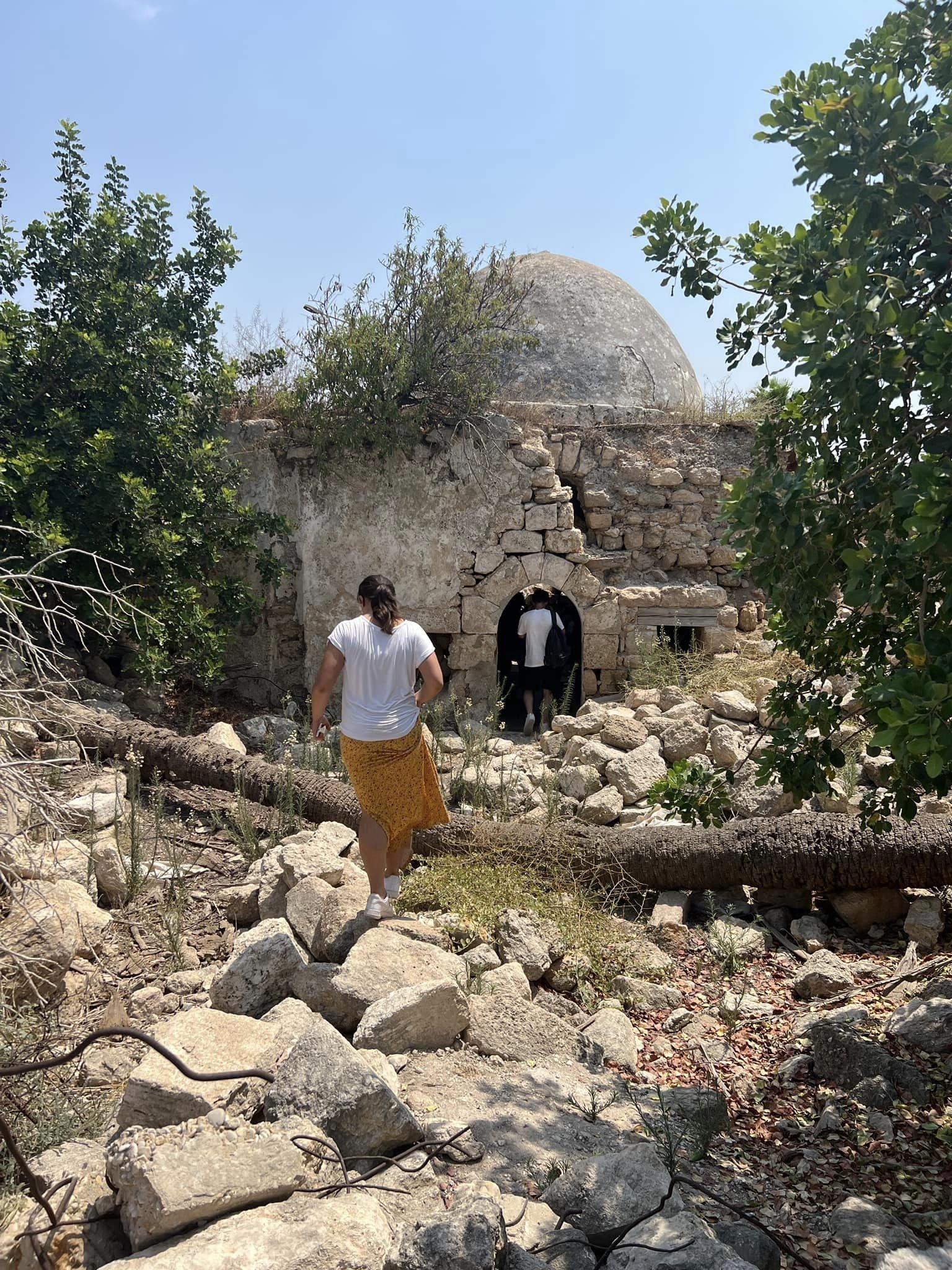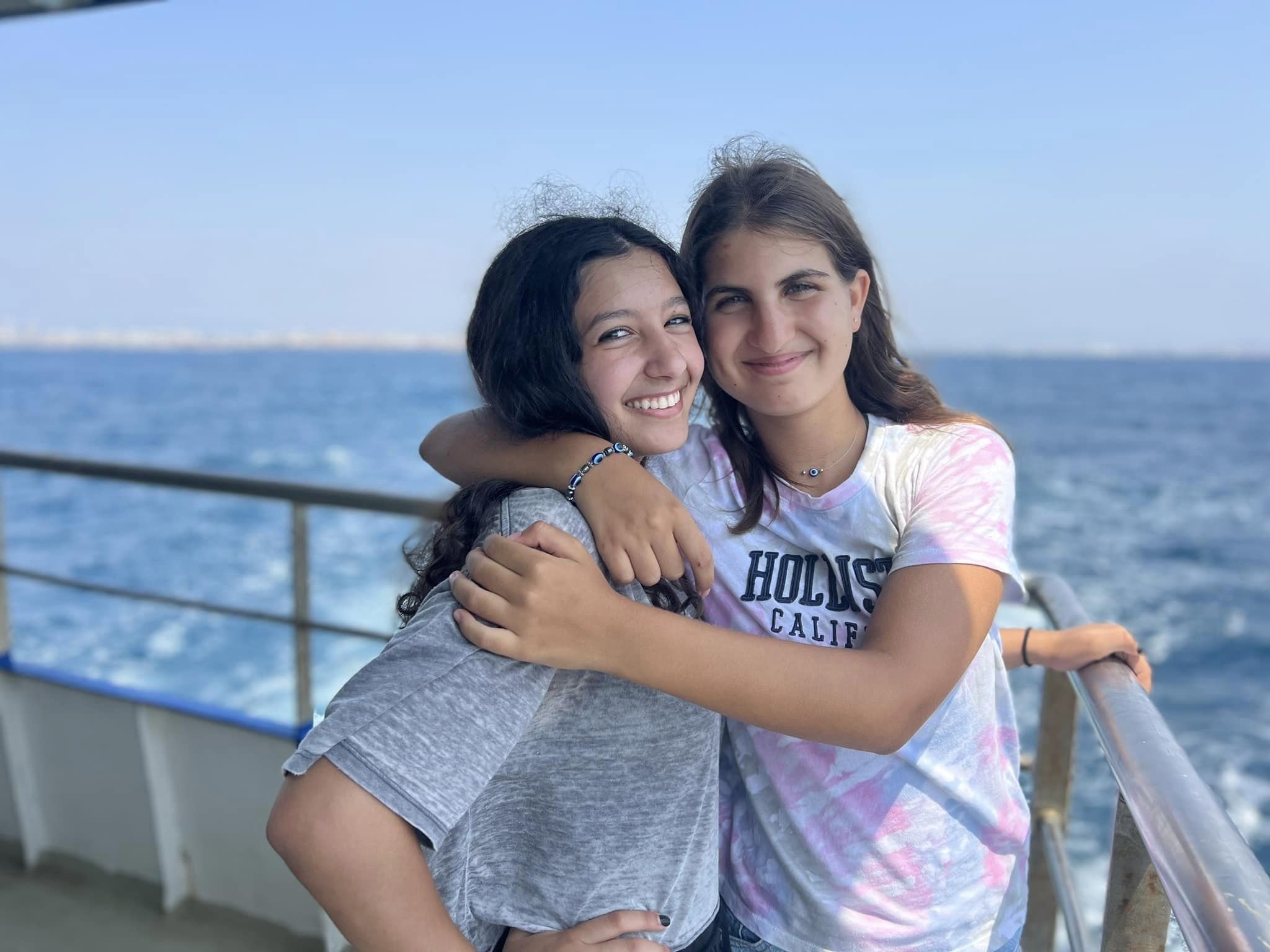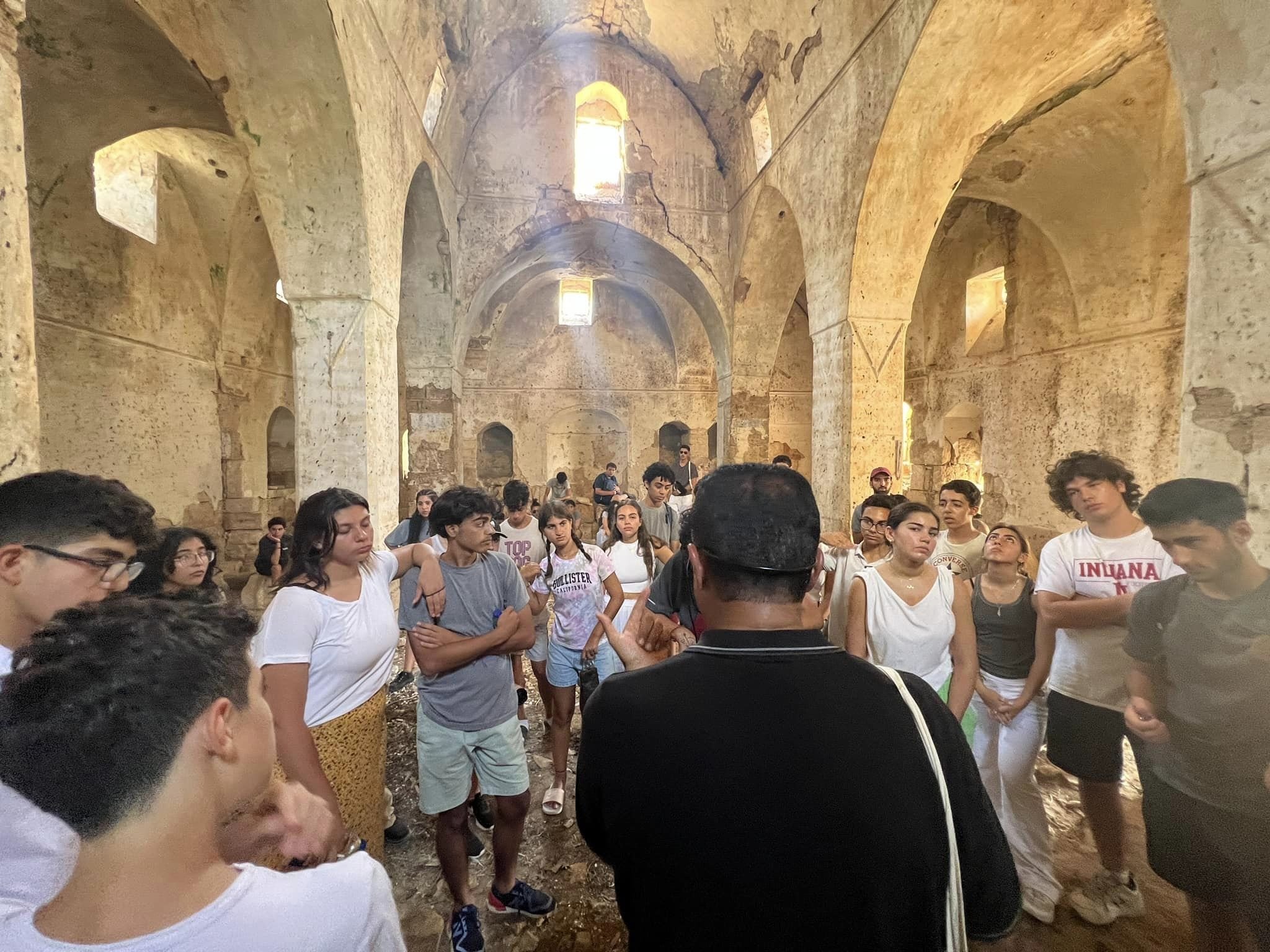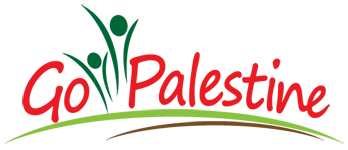☀️ Day 1️⃣6️⃣: Akka & Haifa
Campers gathered on campus at 6 AM and packed their breakfast and snacks for the long trip ahead. We then headed towards Qalandia checkpoint, where it’s been a theme this summer for us to face obstacles 🚪🛑. Despite the delays, we finally made it to the highway and began our trek north, to the borders with Lebanon 🛣️. We arrived to destroyed village in 1948 called Basseh in the Akka district. Basseh was a prominent and wealthy village that boasted a college and other important community centers that served the nearby village in northern Palestine and Southern Lebanon. We met our guide, Umar Al Ghubairi, from an organization called Zakirat. We began our tour by gathering in the remains of Catholic Church. Umar explained to the campers the different intimidation and violent tactics employed by the Zionist terror militias to ethnically cleanse our villages. We then walked towards the village’s mosque, then a prophet’s shrine. From the dilapidating wall of the shrine, Umar explained that the only structures that remain in the village are ones used for public services, and that all the private homes of the villagers were destroyed- with the exception of one home 🏠. When the Israeli surveyors came to destroy the village they asked around about what each structure served as and when they came upon the house they read that this was a Khoury house (Arabic for priest), a very common last name for Arab Christians in the Levant. However, due to their ignorance, they thought this was a priest’s house and therefore this home was left intact to be destroyed by nature instead. We then walked over to the Greek Orthodox Church, which was the site of a massacre in the village which forced all the remaining villagers to leave. Many people of Al Basseh refused to leave during the Nakbeh and as a result the Zionist terror militias gathered the remaining villagers to the church, picked out a 14-year old and 16-year old brother and sister and shot them in front of the remaining villagers, telling them that this will happen to them too if they don’t flee to Lebanon. Our final stop in the village was at the final remaining structure, a Protestant Women’s Community Center which served the local women and children with health and childcare services before 1948. It now sits across from an Israeli sausage factory adorned with Israeli and American flags. The Israelis have converted this site into a military base before leaving it to the natural elements. We could see from the village the huge walls that mark the separation between Palestine and Lebanon. In our final remarks we talked about Akka and the important role it played in the Palestinian national movement as that is the place of our next visit. We departed to Akka and walked through its gate towards the port. In the port we rode on a boat for a quick cruise to view the old city from the sea. When we got off many campers chose to also ride speed boats. Campers got the next few hours free to explore the old city and swim in the beach. We then had a delicious dinner of seafood and other mezzes and baklava for dessert. Afterwards, we departed for Haifa. As we arrived in Haifa’s few remaining Palestinian neighborhoods, Wadi Al Nissnass, we saw protests beginning there as a result of the recent assault on Gaza. This meant we could not explore the neighborhood or even get ice cream at Booza (notable Palestinian gelato shop there) due to security concerns. Our buses ascended Mount Carmel to Haifa’s beautiful Baha’i Gardens. Campers got to witness a gorgeous sunset and we even saw a family of foxes howl as the sun disappeared. Campers explored the nearby park as well before we hopped back on the bus to Ramallah.
